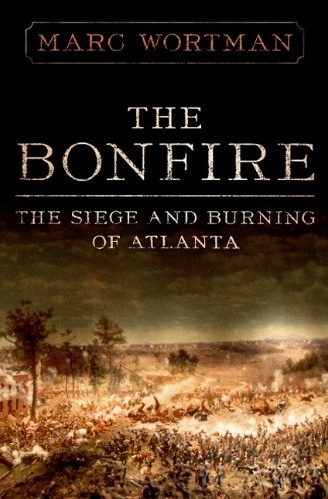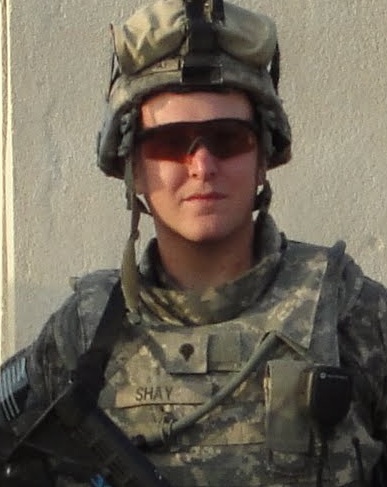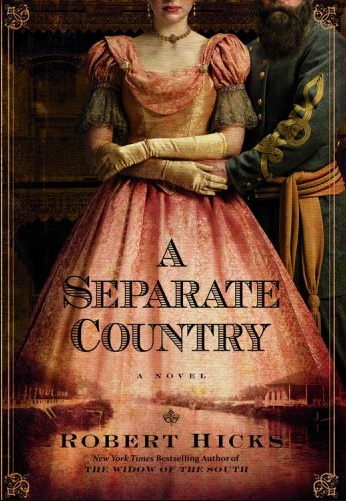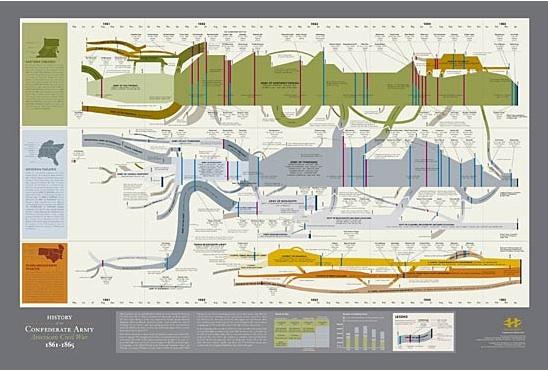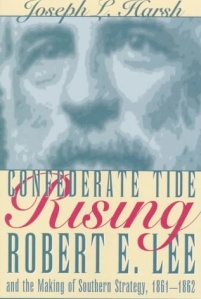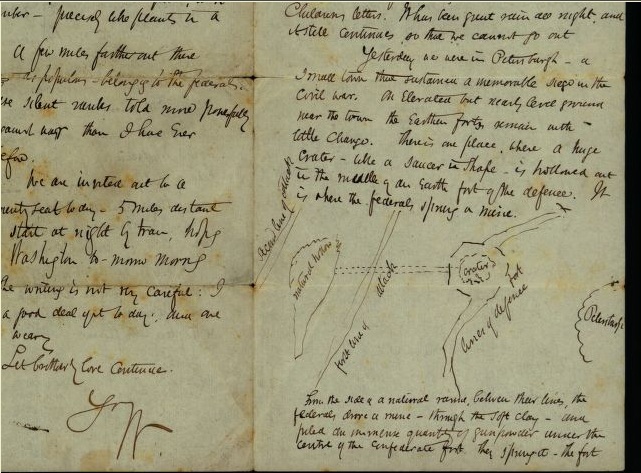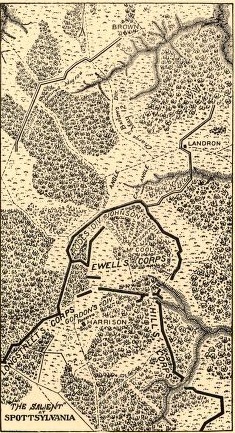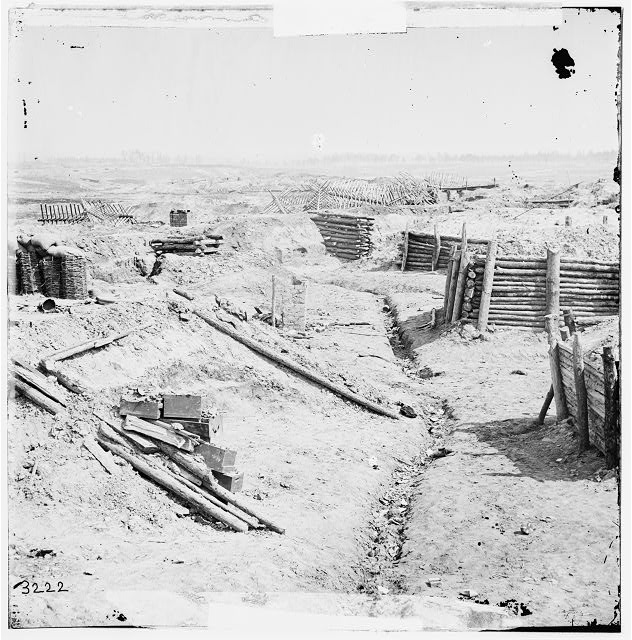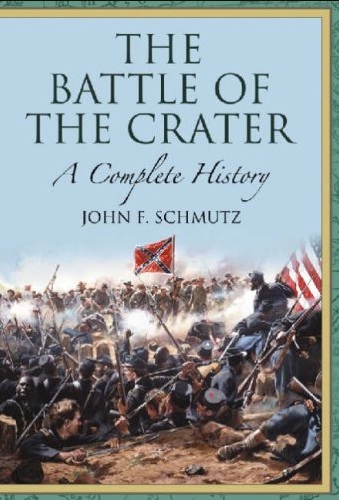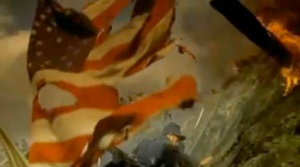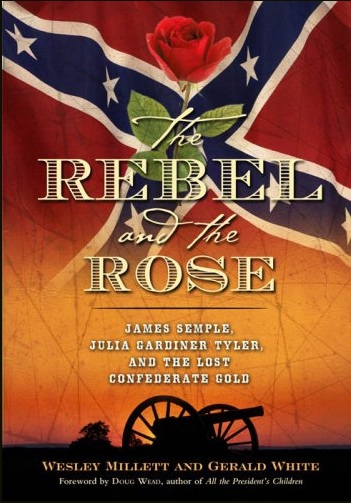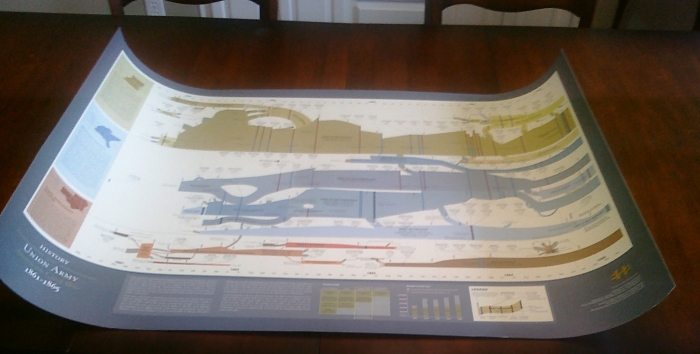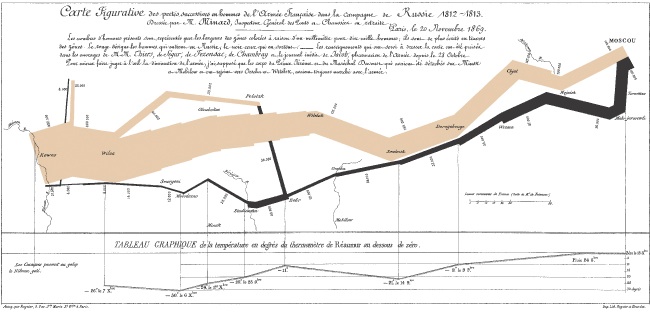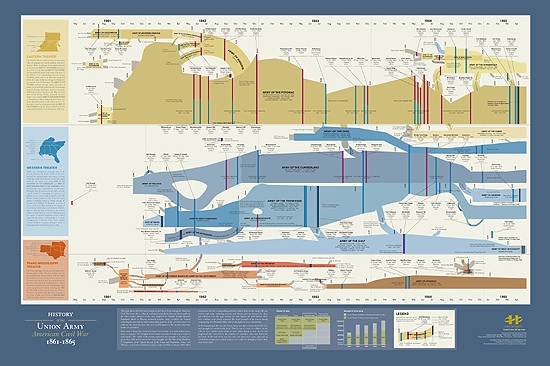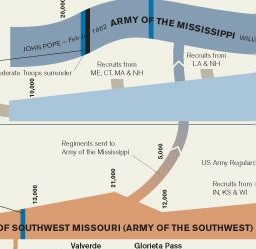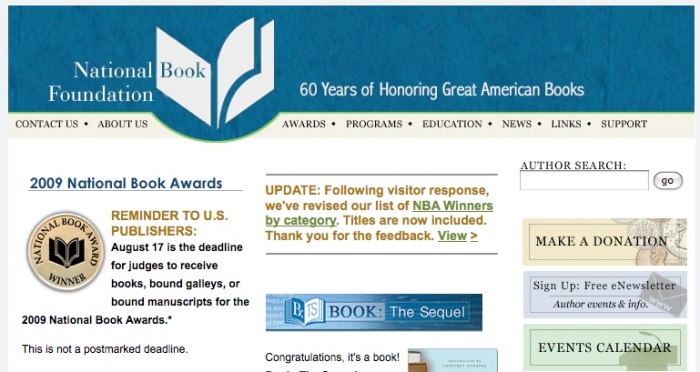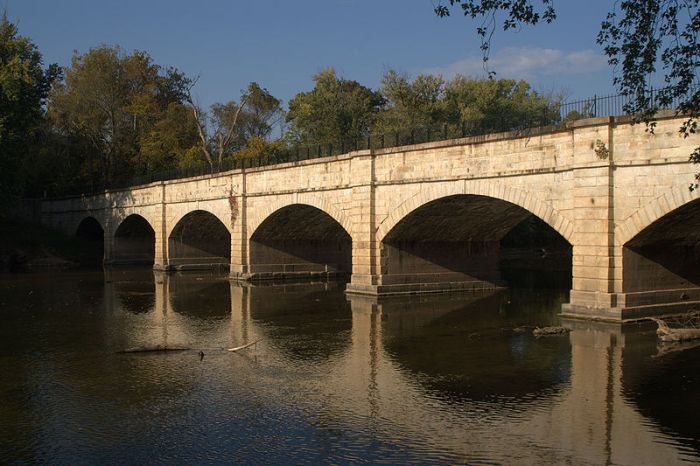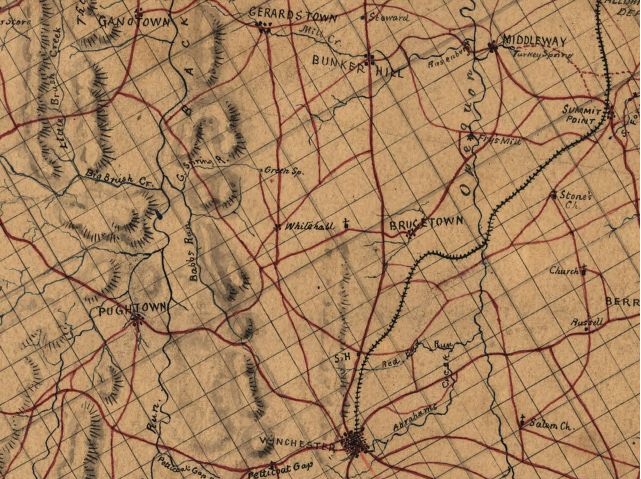Wig-Wags Moving to Wig-Wags.com!
Dear readers and blogosphere colleagues,
I am in the process of making the great leap to a separate domain for my Wig-Wags blog. The new site is up and running but I’m still in the process of transitioning links and applying some spit and polish. That said, I have begun posting at the new site and humbly hope that you will redirect your readers/feeds/or email subscriptions to the new site. The new feed setup is live on the site or you can reach it by clicking here.
For those of you who have kindly placed my current link on your blogrolls, I am hopeful that you will reset them to the new site…
Note I’m in the process of rerunning my series on the Causes of the Civil War and am building a specific page for it which is one of the nifty things about the template I’m using available from Pagelines. As I get more familiar with the new software, I hope you’ll drop by from time to time to see how the project is coming along. I may repost several series in new format so hope you’ll indulge me a bit as that process takes place.
By the way, feedback on the new site is most welcome. As was the case with bringing up Wig-Wags on the WordPress.com platform two years ago, this new effort is an adventure in learning. And I have much to learn!
Thank you all for your readership and support!
Rene Tyree
On General Grenville M. Dodge
One of my readers is researching General Grenville M. Dodge and asked for information. I, of course, turned promptly to my buddy Peter A. Hansen who knows more about rail history than anyone I know. Pete writes for most of the major rail history magazines, consults with museums and rail companies, speaks regularly on rail history, and is currently editor of Railroad History, the scholarly journal of the Railway and Locomotive Historical Society. Pete has also been an on-camera source for CBS News and NBC News. More about Pete here.
Fun Fact: It’s an indisputable fact that Railroad History is the oldest (and still the most scholarly) rail history journal, but it is also believed to be the oldest industrial heritage journal of any kind in the U.S.
The information below is all Pete’s.
“You’ve seen Dodge many times, though you may not have known it. He appears at the center of what’s arguably the most famous photograph in American history (below). Two men on the ground are shaking hands; Dodge is the one on the right.
Golden Spike ceremony; 16-G-99-1-1, Still Picture Records; Photographs and other Graphic Materials; Records of the Office of the Secretary of Agriculture; Record Group 16; National Archives.
Dodge was born in Danvers, Mass. in 1831, and educated at New Hampshire’s Durham Academy and Vermont’s Norwich University. Upon receiving his engineering degree, he did what many ambitious young engineers did in the 1850s: He went to work for a railroad. He started with the Illinois Central, and later went to the Chicago & Rock Island and the Mississippi & Missouri. It was during his service to the latter two roads that he met Thomas C. Durant, who would later become the driving force behind the Union Pacific, the eastern half of the nation’s first transcontinental railroad.
Dodge’s relationship with Lincoln stemmed from a chance 1859 encounter on the front porch of the Pacific House hotel in Council Bluffs, Iowa. Lincoln was in town to inspect some real estate that had been offered as collateral for a loan requested by a friend, and he was also due to make a speech there. (He wasn’t yet an officially-declared candidate for the Republican presidential nomination, but he was at least considering it.) Dodge had just returned from a surveying expedition in Nebraska’s Platte Valley, seeking a route for an eventual Pacific railroad. Lincoln, a frontiersman by birth, was intensely interested in the subject of internal improvements, and particularly in a line to California. During their two-hour meeting, Lincoln did most of the listening, and Dodge, the talking. “By his kindly ways,” Dodge would recall, “[he] soon drew from me all I knew of the country west, and the results of my reconnoisances. [sic] As the saying is, he completely ‘shelled my woods,’ getting all the secrets that were later to go to my employers.”
A few years later, when President Lincoln needed impartial advice on the Pacific Railroad, the greatest non-military undertaking of his administration (or indeed, in all of American history, up to that point), he turned to Dodge. Apart from his unquestioned abilities, it may have been Dodge’s relationship with Lincoln that made him a favorite of Sherman and Grant.
Dodge began the war inauspiciously enough, as colonel of the Fourth Iowa infantry regiment. He was to make his mark at Pea Ridge in early 1862, where he sustained multiple minor wounds and had three horses shot from under him. He was promoted to brigadier general in April of that year, and was commanded to rebuild the Mobile & Ohio Railroad between Corinth, Miss., and Columbus, Ky. Despite continual harassment by Nathan Bedford Forrest, he got the job done by October.
His performance did not go unnoticed. Grant’s chief of staff, John Rawlins, sent for him that month, and he was given a divisional command with the Army of Tennessee. He became something of a spymaster during the Vicksburg campaign, where he also covered Grant’s left during the final stages.
It’s also worth noting that Lincoln sent for Dodge during the Vicksburg siege, seeking his advice on several matters related to the Pacific Railroad Act. In particular, the Act had authorized the president to name the eastern terminus of the line, and Lincoln wanted to hear more about Council Bluffs. Also, certain provisions of the 1862 Act had scared private investors away from the project: Lincoln sought Dodge’s advice on how to redress them, but ultimately rejected Dodge’s advice on the finance question. Dodge thought the government should simply build the railroad itself; Lincoln favored a revised Pacific Railroad Act in which government bonds would take second position to private issues – a reversal from the original Act. Lincoln’s view prevailed in Congress, and a second Pacific Railroad Act was passed in 1864. Lincoln did follow Dodge’s advice about Council Bluffs, however, and to this day, the city is Milepost 0 on the Union Pacific’s line west from the Missouri River.Dodge went on leave after Vicksburg, and Durant lobbied him vigorously to resign his commission and return to railroading. Durant saw an opportunity in the young engineer for unparalleled Washington influence, and offered him the generous salary of $5,000. Nonetheless, Dodge remained in uniform for the rest of the war, though he would never again attain the distinction of the early campaigns. He served under Sherman during the siege of Atlanta, where a bullet fractured his skull, after which he was effectively out of the war.
Incidentally, Dodge’s papers can be found at the Iowa State Department of History and Archives in Des Moines. Do take his writings with a grain of salt: Dodge was not above embellishing his record. His home in Council Bluffs is now a museum, and it’s well worth a visit. While you’re in town, you might also check out the Union Pacific Railroad Museum, which tells the story of the first transcontinental railroad, and of Dodge’s role in it.
Two additional footnotes:
- One of the perks of being a railroad construction engineer, especially in virgin territory, was the ability to name places. Thus, the highest point on the first transcontinental line was at Sherman, Wyo., 8013 feet above sea level. Some 120 miles west, another Wyoming town bears the name of Rawlins.
- Some of Dodge’s history with Lincoln is recounted in my February 2009 Trains magazine feature, ‘The Rail Splitter and the Railroads.'”
————————————————————
Many thanks to Pete for the information above!
For more on Grenville Dodge, I recommend:
- Iowa Public Televisions Series on Dodge here.
- Dodge’s book, How we built the Union Pacific railway: and other railway papers and addresses thanks to Google Books.
On Braxton Bragg – 1
W. J. Wood called Braxton Bragg the “most complicated of all the Confederacy’s generals.”(1) A graduate of the academy, where he excelled, he displayed skills as an administrator and adept trainer of troops. He had seen action in the Mexican War and was heralded as a war hero for his actions commanding artillery during the Battle of Buena Vista. Bragg was a stern disciplinarian, which Wood attributes to his experiences in Mexico where volunteer units ran when under fire from the enemy. He could be brusque even to the point of being rude.(2) He also shared his opinions freely, often too freely.

Library of Congress: Battle of Buena Vista, fought Feb. 23rd, 1847. Lithograph by N. Currier, 1847. Reproduction number: LC-USZC4-2957
(1) W. J. Wood, Civil War Generalship: The Art of Command [book on-line] (Westport, CT: Praeger Publishers, 1997, accessed 29 November 2009), 118; available from Questia, http://www.questia.com/PM.qst?a=o&d=30549970; Internet.
John Woo’s Epic Film…Red Cliff. Civil War in Ancient China
Every once in a while, a movie comes along that takes the visual depiction of battle to a new level (Braveheart, Saving Private Ryan). John Woo’s epic film, Red Cliff, does just that. Based on the actual Battle of Red Cliffs (see the Red Cliff Wiki here) that took place in the winter 208 CE, the film depicts the conflict between northern Chinese Prime Minister Cao Cao, and a coalition of southern forces led by Liu Bei and Sun Quan. While fact and fiction undoubtedly blur, the film is based on Records of Three Kingdoms, which provides a more historical view of the epic battle than that depicted in the novel, Romance of the Three Kingdoms. Its American distributor is Magnolia Pictures who kindly sent me a review copy last week.
This film demands your full attention. It depicts both land-based and naval warfare in an age when weapons included sword and shield, bow and arrow, spear, and fire bombs. Woo went BIG in imagery and battle size. Cao Cao was reported to have brought 800,000 soldiers to invade the south on twently thousand ships so Woo used Army soldiers to supplement extras. Animators did the rest. Those interested in the animation techniques used in creation of the film will find interesting Bill Desowitz‘s article “The Battle of Red Cliff — John Woo Style!,” on the Animation World Network here. Pay particular attention to the Tortoise Shell Formation battle (below), one of the highlights of the film.
Animator’s also created the immense fleet of ships on which Cao Cao transported his army south. The climatic naval battle is beyond anything I’ve seen on film. Your attention is also required because the film, made in Mandarin, uses English subtitles that are occasionally difficult to see.
Wildly popular in China since its 2008 release, Red Cliff is now available to American audiences in select theaters and through video on demand (VOD) in a abridged format (the original film is in two parts and runs over four hours).
The cast, while perhaps less familiar to American audiences, includes some of the most popular actors on the planet.
Zhang Feng-Yi (Prime Minister Cao Cao)
Tony Leung Chiu-Wai (Strategist and warrior Zhou Yu (Ye))
Takeshi Kaneshiro (Shu strategist Zhuge Liang)
Yong You (Liu Bei)
Chang Chen (Sun Quan)
Vicky Zhao Wei (Wu princess Sun Shang Xiang)
Lin Chi-Ling (Zhou Yu’s wife, Xiao Qiao)
Shido Nakamura (Gan Xing) [also appeared in Letters from Iwo Jima]
Hu Jun (Zao Yun)
HIGHLY RECOMMEND
New: A Dragon’s Head and a Serpent’s Tail: Ming China and the First Great East Asian War, 1592-1598
 It’s always a pleasure to receive a book about military history that’s a bit outside of my primary focus because invariably I learn something that informs my study. The good folks
It’s always a pleasure to receive a book about military history that’s a bit outside of my primary focus because invariably I learn something that informs my study. The good folks ![]() at the University of Oklahoma Press sent me a review copy of a new book by Kenneth M. Swope, A Dragon’s Head and a Serpent’s Tail: Ming China and the First Great East Asian War, 1592-1598. The book becomes Volume 20 of the Campaigns & Commanders Series edited by Gregory J. W. Urwin from Temple University.
at the University of Oklahoma Press sent me a review copy of a new book by Kenneth M. Swope, A Dragon’s Head and a Serpent’s Tail: Ming China and the First Great East Asian War, 1592-1598. The book becomes Volume 20 of the Campaigns & Commanders Series edited by Gregory J. W. Urwin from Temple University.
Professor Swope (left) has labeled this conflict, which included Japan, China, and Korea, as “the first great Asian War.” His is the first full-length scholarly study in English of a six year military event was pivotal to the history of warfare, drove advancement in military technologies, and produced naval battles that rivaled any in Europe.
Impressive is an extremely rich Bibliography, solid Notes, and a “Selected Chinese Character List. Swope also provides a “Dramatis Personae” section to assist with keeping the long list of players straight, a table of “Chinese Weights and Measures,” and a “Timeline of the War.” Eleven maps and fifteen illustrations are also included, the latter not for the squeamish.
I’ll be making time to read. Here’s a snippet from the Introduction…
Tucked away in a back alley of Kyoto, largely ignored amid the temples, pagodas, castles, and teahouses, stands a curious monument to the cold, calculating callousness of war in early modern East Asia. Called “Kyoto‘s least mentioned and most-often-avoided tourist attractions” by one scholar, the Mimizuka (Mound of Ears) and children’s playground actually contains what is left of thousands of severed and pickled Chines and Korean noses sent back to Japan’s overlord and instigator of the First Great East Asian War of 1592-98, Toyotomi Hideyoshi (1536-98).
Because heads, the normal proof offered to gain rewards for one’s deeds in battle in Japan, were too large and unwieldy to ship overseas, the Japanese resorted to severing the noses of slain foes and sending them home to satisfy the kampaku’s thirst for revenge against those who refused to accept his primacy in East Asia. Hideyoshi‘s men were assigned a quota of three Korean (or Chinese) noses per soldier. Although modern estimates vary, it is generally accepted that 100,000-200,000 noses eventually reached Japan, though some Koreans apparently survived the ordeal and spent the rest of their days without noses.
A photo of a Mimizuka shrine. Used with the permission of Nils Ferry (planetkyoto.com). {{CopyrightedFreeUse}})
Lincoln’s Impact on Military Operations
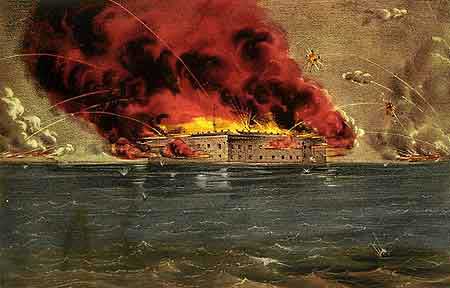
Bombardment of Fort Sumter, Charleston Harbor, a color lithograph by Currier & Ives; (SCALA/Art Resource)
In class, we’ve been discussing how the decisions of the two commanders-in-chief during the American Civil War impacted events at the operational level. Modern scholars have challenged the notion that Lincoln simply stayed involved in military details until he found the right general (Grant). Eliot Cohen posits that’s “Lincoln exercised a constant oversight of the war effort from beginning to end.”(1) This intense interest in providing direction can be seen as early as the events surrounding the attack on Fort Sumter. Lincoln’s order of the nonviolent resupply of the fort, which caused the Confederates to fire the first shot and thus initiate the war, demonstrates Lincoln’s willingness to go against the advice of senior commanders. Equally important, it showed his considerable ability at playing the game of strategy. Cohen summed it up well by calling Lincoln’s move “characteristically cunning” and revealing of “a steely willingness to accept the hazards of war.”(2)
Lincoln continued to immerse himself in operational details, stepping back only to a degree when General Grant became General-in-chief but certainly not completely. Lincoln carefully reviewed dispatches and, as has been well documented, literally camped in the telegraph office during battles. In fact, he qualified as a micro-manager to some degree. As such, one of the ways in which his leadership impacted operation was by his dismissal of generals who didn’t perform. “By comparison with our recent presidents, Lincoln was an exceptionally unforgiving boss.”(3) He also took considerable personal interest in the technological advancements that took place prior to and during the war. His personal influence could make things happen as it did with the development of river canon, which helped to win control by the Union of the Mississippi River and southern ports.
Lincoln was so intent upon staying informed of field activities that he installed journalist Charles Dana as, effectively, a spy in Grant’s camp while he was assigned in the west. Dana, who even had his own cipher for sending reports back to Stanton, was also dispatched to observe and report back on the command abilities of General Rosecrans. Lincoln put Dana back in Grant’s camp later in the war even after Grant had demonstrated success and earned Lincoln’s trust. This fact further dispels the notion that Lincoln simply turned over the war’s higher direction to Grant.(4) In fact, Cohen posits that “Lincoln did not merely find his generals; he controlled them. He molded the war to its last days, and he intended to dominate the making of peace at its end.” (5)
(1) Eliot A. Cohen, Supreme Command: Soldiers, Statesmen and Leadership in Wartime, (London: Free Press, 2002), 19.
(2) Ibid., 20.
(3) Ibid., 24.
(4) Ibid., 51.
(5) Ibid., 21.
New in Paperback – This Mighty Scourge: Perspectives on the Civil War
The good folks at Oxford University Press recently sent me a copy of the new paperback edition of James McPherson’s This Mighty Scourge: Perspectives on the Civil War. First published in 2007, it comprises 16 essays in which McPherson attempts to answer the following questions:
- Why did the war come?
- What were the war aims of each side?
- What strategies did they employee to achieve these aims?
- How do we evaluate the leadership of both sides?
- Did the war’s outcome justify the immense sacrifice of lives?
- What impact did the experience of war have on the people who lived through it?
- How did later generations remember and commemorate that experience?
- Author: James M. McPherson
- Publisher: Oxford University Press
- ISBN13: 9780195392425
- ISBN10: 0195392426
- Paperback, 272 pages
- Sep 2009
I read the hardback version in 2007 and can highly RECOMMEND.
FYI – Amazon has the paperback version available for here for $12.21.
New Acquisition – Supreme Command: Soldiers, Statesmen, and Leadership in Wartime
![]() I’ve made a number of new acquisitions over the past few weeks. I bought this book to assist with an assignment on the command skills of Abraham Lincoln. Author Eliot A. Cohen (left), also examines the records of Georges Clemenceau, Winston Churchill and David Ben-Gurion in an effort to synthesize why they stand above others as leaders in time of war. So far, after reading the first few chapters, I’m quite impressed. Full disclosure: I own the 2002 paperback version of this book published in the UK by The Free Press. I recently purchased the audio version from Audible.com published by Blackstone Audiobooks and narrated by Robert Whitfield (a.k.a. Simon Vance).
I’ve made a number of new acquisitions over the past few weeks. I bought this book to assist with an assignment on the command skills of Abraham Lincoln. Author Eliot A. Cohen (left), also examines the records of Georges Clemenceau, Winston Churchill and David Ben-Gurion in an effort to synthesize why they stand above others as leaders in time of war. So far, after reading the first few chapters, I’m quite impressed. Full disclosure: I own the 2002 paperback version of this book published in the UK by The Free Press. I recently purchased the audio version from Audible.com published by Blackstone Audiobooks and narrated by Robert Whitfield (a.k.a. Simon Vance).
- Author: Eliot A. Cohen
- Published: 2003-09-09
- Publisher: Anchor
- ISBN13: 9781400034048
- Binding: Paperback
- 320 pages
WWII in HD – Recommend
I’ve been catching the WWII in HD series running on The History Channel when I can today. Much of the footage has never been seen on television. Good study guide on History.com along with other supporting information.
RECOMMEND!
National Geographic’s New Atlas of the Civil War
- Hardcover: 256 pages
- Publisher: National Geographic (October 20, 2009)
- Language: English
- ISBN-10: 1426203470
- ISBN-13: 978-1426203473
- Product Dimensions: 13.7 x 10.7 x 1.1 inches
The good folks at National Geographic sent me a review copy of their new Atlas of the Civil War: A Comprehensive Guide to the Tactics and the Terrain of Battle. I’m impressed. This is one of those books that as a kid I would spread out on the floor in front of the fire and lose myself in for hours. It’s FULL size means just that. Images that many of us have seen for years, and many we’ve never seen, are spread across pages over a foot high. So when looking at the bloated bodies of dead warriors near the Peach Orchard of Gettysburg’s Battlefield, it becomes immediately obvious that none have shoes, scavengers having carried them away.
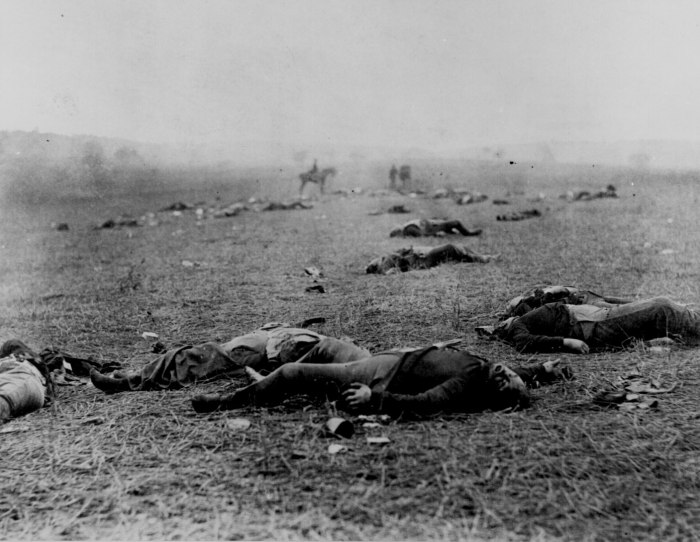
Union and Confederate dead, Gettysburg Battlefield, Pa., July 1863. Photographed by Timothy H. O'Sullivan. 165-SB-36. National Archives
Plainly visible among the troops and civilians crowded inside the walls of Washington’s Old Penitentiary on July 7, 1865 (below) to witness the hanging of Lincoln assassination conspirators, is a young boy, apparently unable to turn away from the gallows.
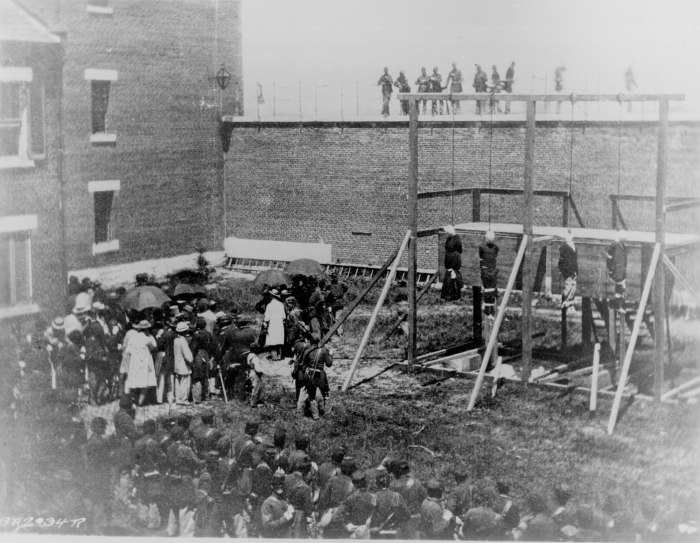
Execution of the four persons condemned as co-conspirators in Lincoln's assassination, July 7,1865. Photographed by Alexander Gardner. 111-BA-203 National Archives
But even more impressive are the maps. There are 88 rare period maps, many published for the first time, and 34 new maps created by the staff of the National Geographic’s cartographers led by Carl Mehler. All are in a large format which makes them entirely readable. Almost a dozen orders of battle are also provided along with biographies and timelines.
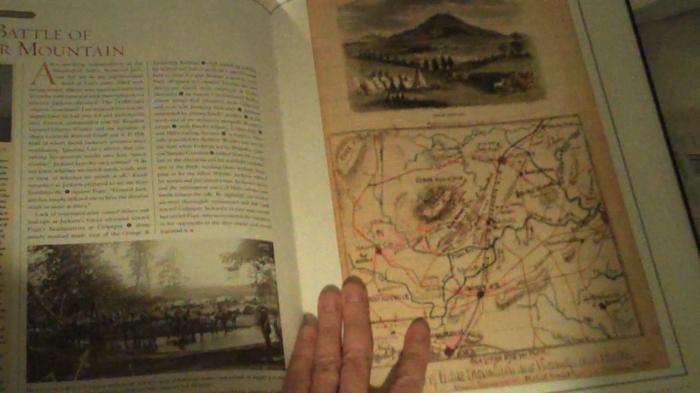
Editor Neil Kagan and historians Stephan G. Hyslop and Harris J. Andrews, who also collaborated on National Geographic’s Eyewitness to the Civil War, have provided excellent commentary and a rich story of the war from beginning to end. Carol Norton, as art director, led the creative vision for what is really a quite remarkable book of art.
I say BRAVO. Highly recommend.
On the Hunt for Sources on David G. Farragut’s Leadership
I’ve decided choose as topic for the research paper I’m writing for my current class, the leadership of David G. Farragut during the New Orleans Campaign. I’m on the hunt for both primary and secondary sources. Let me know if you have recommendations.
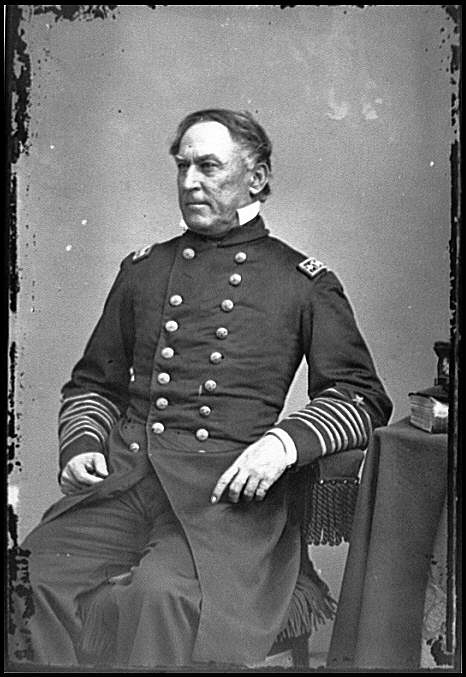
Portrait of Rear Adm. David G. Farragut, officer of the Federal Navy (Vice Adm. from Dec. 3, 1864) Source: Library of Congress LC-B813- 1561 A
Book Review: Jefferson Davis and His Generals – The Failure of Confederate Command in the West
STEVEN E. WOODWORTH. Jefferson Davis and His Generals: The Failure of Confederate Command in the West. Lawrence, Kansas: University Press of Kansas. 1990. Pp. xv, 380. $16.95.
Much has been written about the political and military genius of Abraham Lincoln and the successful leader he grew to be while Commander in Chief of a fractured union. But as the country divided and civil war became a reality, a new leader was called upon to assume the role of Commander in Chief for the Confederacy, the seasoned Jefferson Davis. At the precipice of war, betting men looking at the comparative qualifications of the two presidents could easily have predicted that Davis would outshine Lincoln. What kind of leader did Davis prove to be and how did he recruit and manage those men who would become members of his high command? What kind of generals were they and how did their personalities and actions impact the outcome of the war?
Steven E. Woodworth’s monograph answers those questions and others through examination of Jefferson Davis’ handling of the generals who defended the newly formed Confederacy in the Western theater of the American Civil War. Against a chronology of key events, each commander is introduced with information essential to understanding the skills they brought to war. Woodworth gives us their respective birthplaces, education, military and political experience, and reasons for consideration as senior leaders. Their performances in command roles are examined along with their interactions with Davis. There is brilliance to be sure from both Davis and some of his generals. But there is also incompetence, jealousy, loss of nerve, and even a propensity toward sabotage of brother commanders. Varying degrees of analysis are given to among others: Leonidas Polk, Simon Bolivar Buckner, Albert Sidney Johnston, P.G.T. Beauregard, Braxton Bragg, Early Van Dorn, John C. Breckenridge, Edmund K. Smith, Nathan Bedford Forrest, Patrick R. Cleburne, Sterling Price, William J. Hardee, John C. Pemberton, Joseph E. Johnston, Benjamin F. Cheatham, James A. Seddon, Daniel H. Hill, James Longstreet, Gideon J. Pillow, David Twiggs, and John Bell Hood. Woodworth pulls no punches.
Woodworth concludes that Davis was highly trained, skilled from a breadth of experience in the militarily and in politics, and eminently qualified to assume the role of Commander in Chief of the Confederacy. He was also flawed. His imperfections are revealed as the war in the West is traced from beginning to end. Davis is shown to be incapable of judging objectively the performances of personal friends. He both trusts and delegates too much to his leaders. This trait worked to the detriment of some of the most exceptional men like Albert Sidney Johnston, who accomplished miracles in the defense of western borders despite unanswered requests to fill and equip his ranks. It also left incompetents like Leonidas Polk in power, impairing more talented men like Braxton Bragg. Davis becomes consumed by the war emotionally and physically. In the end, failure in the West is seen to have contributed significantly to the failure of the Confederacy. Woodworth posits that the faults of Davis himself, stemming from a deep-seated insecurity, are contributory to this failure.

Woodworth brings to the work the credentials of a seasoned historian. He holds history degrees from Southern Illinois University (B.A. 1982) and Rice University, where he received a Ph.D. in 1987. At the time of the book’s publication, he taught history at Toccoa Falls College in Georgia. He now teaches U.S. history, Civil War and Reconstruction, and the Old South at Texas Christian University. He also teaches military history at the American Military University. He is a prolific and award winning author.
Woodworth provides an insightful contribution to our understanding of the Civil War by revealing the best and the worst of the Confederacy’s senior military leadership in the West.
Particularly helpful to an understanding of the challenges faced by Davis’ high command is Woodworth’s campaign analysis. Also exemplary is the concise summary he provides of key points at the end of each chapter. This important study in leadership fills a gap and stands equal to and complementary of the T. Harry William classic, Lincoln and His Generals. It is both highly readable and academically rich.
The War of 1812 in the Age of Napoleon by Jeremy Black
The good folks at the University of Oklahoma Press forwarded a review copy of Jeremy Black’s new book, The War of 1812 in the Age of Napoleon. In my usual fashion, I am making an initial post about the book before a full reading.
ISBN: 978-0-8061-4078-0
Hardcover
288 pages
6″ x 9″ x 0″
1 B&W Illus., 3 Maps
Published: 2009, Oklahoma University Press

Jeremy Black (Photo: athens.edu)
The quick perusal reveals several compelling reasons for recommending the book. First, it is written from “an Atlantic vantage point, which accounts for its contribution to the academic coverage of the war as the latter tend to reflect national perspectives, mostly American, but also Canadian.” (Black, xiv) It goes without saying that any serious scholar of military history would seek out the work of historians and indeed primary sources providing insights from a variety of vantage points. Second, Black speaks to the impact of the war not only on America but also on Canada. Black speculates on how the history of the United States would have been very different had it expanded into Canada, “not the least because the slave states of the South would have been in a decided minority.” (Black, xii) Third, Black covers the naval operations so crucial to the war’s outcome. Fourth, the books addresses the consequences of the war. Black discusses the war’s “impact on America’s politics, public culture, economy, and territorial expansion” as being even more important than the military results. (Black, xiii) Finally, the book promises to explore the implications of unwanted expeditionary war, a topic with relevancy today.
Professor Black’s new book is Volume 21 in the Campaigns and Commanders Series. Black, a prolific writer, has authored more than seventy (70) books. He is Professor of History at the University of Exeter and a senior fellow at the Center for the Study of America and the West at the Foreign Policy Research Institute in Philadelphia. He has lectured extensively around the world.
The Campaigns and Commanders Series at the University of Oklahoma Press include the following:
| Title | Volume | Author(s) | |
| The War of 1812 in the Age of Napoleon | 21 | By Jeremy Black | |
| A Dragon’s Head and a Serpent’s Tail | 20 | By Kenneth M. Swope | |
| With Zeal and with Bayonets Only | 19 | Matthew H. Spring | |
| Once Upon a Time in War | 18 | Robert E. Humphrey | |
| Borrowed Soldiers | 17 | Mitchell A. Yockelson; | |
| The Far Reaches of Empire | 16 | John Grenier | |
| Napoleon’s Enfant Terrible | 15 | John G. Gallaher | |
| Three Days in the Shenandoah | 14 | Gary Ecelbarger | |
| George Thomas | 13 | Christopher J. Einolf | |
| Volunteers on the Veld | 12 | Stephen M. Miller | |
| The Black Hawk War of 1832 | 10 | Patrick J. Jung | |
| William Harding Carter and the American Army | 9 | Ronald G. Machoian | |
| Blood in the Argonne | 8 | Alan D Gaff | |
| Blue Water Creek and the First Sioux War, 1854-1856 | 6 | R. Eli Paul | |
| The Uncivil War | 5 | Robert R. Mackey | |
| Bayonets in the Wilderness | 4 | Alan D Gaff | |
| Washita | 3 | Jerome A. Greene | |
| Morning Star Dawn | 2 | Jerome A. Greene | |
| Napoleon and Berlin | 1 | Michael V. Leggiere |
200,000th View of Wig Wags
A moment of celebration for the 200,000th view of Wig Wags that occurred sometime today. Many thanks to those who have stopped by.

Ahem. Carry on…
OH and thanks to Gabriel Pollard for the photo.
National Book Awards Finalists
The National Book Awards finalists have been named.
And here are your finalists for the Non-Fiction category…
![]() .
.
Congratulations to the authors and publishers!
I’ve got my eye on the The First Tycoon: The Epic Life of Cornelius Vanderbilt.
A Civil War Border Killing
A friend recently found a newpaper article regarding the death of his wife’s great grandfather, published below with permission. Since I live near the border of Missouri and Kansas and have posted quite a bit on our Civil War era border wars, I found this particularly interesting.
Note that Elwood, Kansas (originally called Roseport) is directly across the Missouri River from St. Joseph, Missouri.
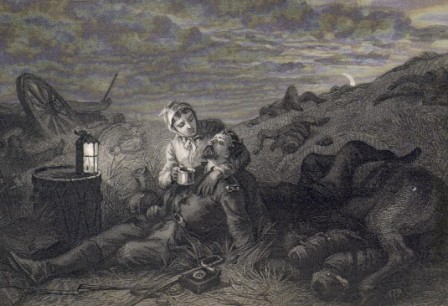
St. Joseph Morning HeraldThursday September 11, 1862
Killing in Elwood (Kansas). Last Thursday a Mr. Slaughter was killed in Elwood by some Federal soldiers from Troy. We heard different versions of
the affair, at the time, and declined to publish any of them. Yesterday Mr. John Norton of Elwood, who lives with the Coroner, and was the
first man on the ground after the killing, brought us the following account of the affair, obtained from Mrs. Slaughter, the wife of the deceased:
Samuel A. Slaughter, living in Elwood, was killed Thursday night Sept 4, about 1 o’clock, as follows: A man named Day was living in
the house with the deceased. The soldiers came to the door which was left open, and began ballooing for the man of the house. Mr. Day asked
them what they wanted, and they replied, “A light.” He immediately struck a light, and they then asked him if a man named Slaughter lived there.
He replied affirmatively. They told him to tell Slaughter they wanted to see him. Mr. S. put on his clothes, went to the door, and asked them
what they wanted of him. They replied, “No matter, come along with us.” They took him out of the yard, and as soon as he was outside the gate, a revolver was fired. After the firing, the soldiers twice cried “halt.” They then cried, “There is a dead man out here, come and take care of him.”
Mr. Day and Mrs. Slaughter went out there, found Mr. Slaughter dead, ‘roused some of the neighbors, and procured a Coroner. The soldiers forbid them holding an inquest. They said they were there to arrest Mr. S. and he ran from them, and none should be held.
Mr. Slaughter was a secessionist, aged 26 or 28 years, and leaves a wife and two children. He formerly lived in this city, and once kept a
small saloon by the Elwood Ferry landing, called “The First and Last House.”
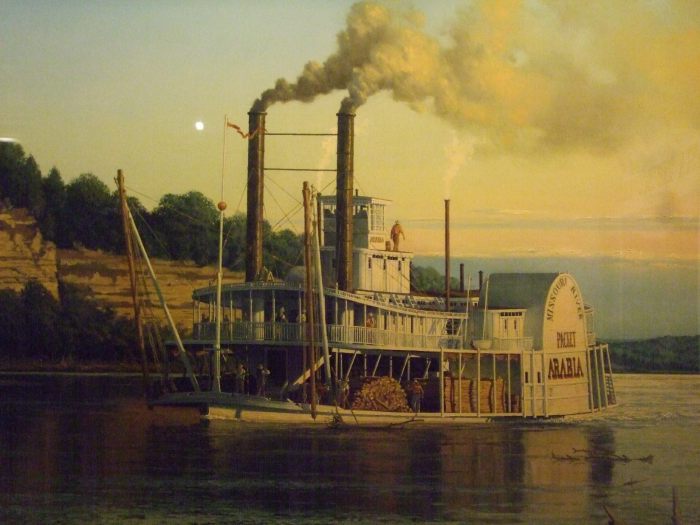
Elwood, first called Roseport, was established in 1856. In its heyday scores of river steamboats unloaded passengers and freight at its wharves and every 15 minutes ferryboats crossed to its Missouri rival, St. Joseph. During the 1850’s thousands of emigrants outfitted here for Oregon and California. Late in 1859, Abraham Lincoln seeking the Republican nomination, here first set foot in Kansas, and spoke in the three-story Great Western Hotel. Elwood was the first Kansas station on the Pony Express between Missouri and California. Construction of the first railroad west of the Missouri river began here in 1859. On April 23, 1860, the first locomotive, “The Albany,” was ferried over and pulled up on the bank by hand. Elwood’s ambitions for greatness were thwarted, not by St. Joe, but by the river which undermined the banks and washed much of the old town away.
Class starts today! Civil War Command and Leadership
Class starts today!
Civil War Command and Leadership
The book list changed a bit since my first post. That’s ok. The books I picked up for the old book list are good ones.
Professor: Steven E. Woodworth
I’ve updated the courses page with the information below.
Required Texts:
Glatthaar, Joseph T. Partners in Command: The Relationships Between Leaders in the Civil War. New York: The Free Press, 1993.
McPherson, James M. Tried by War: Abraham Lincoln as Command-in-Chief. New York: Penguin, 2009
[Course professor] Woodworth, Steven E. Jefferson Davis and His Generals: The Failure of Confederate Command in the West. Lawrence, KS: University Press of Kansas, 1990.
Hargrett Library Rare Map Collection – The American Civil War
Check out the collection of rare American Civil War maps provided in the Hargrett Library collection digitized and online here. This excellent resources demonstrates the power of digitization of primary sources. Bravo!
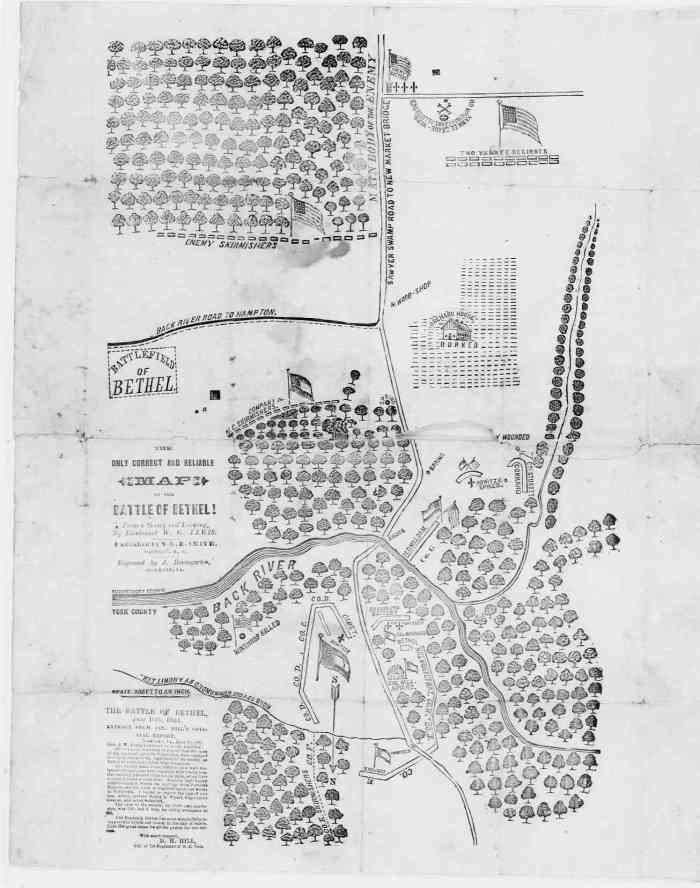
"The Only Correct and Reliable Map of the Battle of Bethel," Hargrett Library Rare Map Collection - The American Civil War
Jayhawkers: The Civil War Brigade of James Henry Lane
ISBN: 978-0-8061-3999-9
Cloth
352 pages
12 b&w illus., 1 map
Published: 2009-04-30
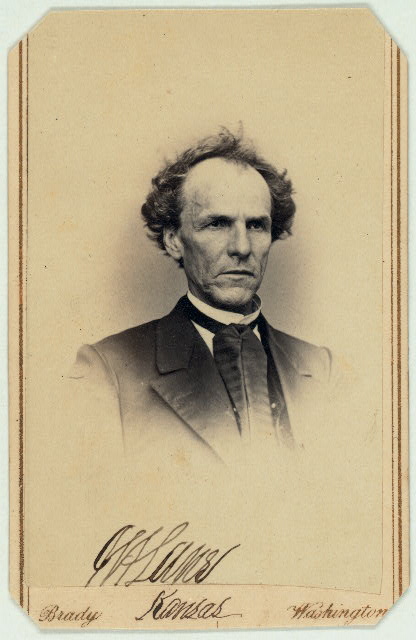
Carte d' visite of James Henry Lane, 1814-1866 Photographer: Brady National Photographic Art Gallery (Washington, D.C.) Library of Congress, Reproduction Number: LC-MSS-44297-33-037 (b&w negative)
The good folks at the University of Oklahoma Press sent me a review copy yesterday of Bryce Benedict’s Jayhawkers: The Civil War Brigade of James Henry Lane. In my usual fashion, I’m posting a few comments prior to a thorough reading.
I live on the borders of Missouri and Kansas so confess some considerable fascination with both Jim Lane and the evolution of war in the towns and farmlands of this part of the Western theater. Lane, a Kansas senator and strong advocate of Lincoln, was a player. Benedict identifies Lincoln himself as having given Lane authority “to raise and command two volunteer regiments.” Lane used them to harass Missourians with violence, theft, and destruction of property in a manner foreshadowing that of Sherman. Benedict posits that Lane thus embraced the notion of “total war” as a means of disabling the enemy’s war machine before it became more widely adopted as a strategy of the Union.
The photo of Lane on the cover (above) was a brilliant choice. After perusing the Library of Congress and finding his carte d’visite (left), it becomes clear that the look of the man fit his personality. In the words of Milton W. Reynolds, Lane was “weird, mysterious, partially insane, partially inspired, and poetic.” He described him as having lived a “…wayward, fitful life of passion and strife, of storm and sunshine a mysterious existence that now dwelt on the mountain-tops of expectation and the very summit of highest realization, and anon in the valley of despondency and deepest gloom.” [1] Lane committed suicide by shooting himself in the mouth with a pistol in 1866.
Author Bryce Benedict has produced a well researched work with notes for each chapter and three appendices including considerable information about fate of the casualties of Lane’s brigade, most of whom died from disease.
—–
For further reading, check out these books digitized for online reading at the Library of Congress.
[1] Connelley, William Elsey, (1855-1930) James Henry Lane, the “Grim chieftain” of Kansas (Topeka: Crane, 1899). The Library of Congress Digitized Book. LOC Call number: 9594581, Digitizing sponsor: Sloan Foundation
New Acquisition – The Complete Gettysburg Guide
I made a number of new acquisitions over the past month. The latest arrived in the mail today and has been added to my virtual bookshelves here. I’m actually pretty excited by this purchase.
![]() .
.
The Complete Gettysburg Guide: Walking and Driving Tours of the Battlefield, Town, Cemeteries, Field Hospital Sites, and other Topics of Historical Interest
Format: Hardcover
Price: $39.95
ISBN: 978-1-932714-63-0
Published: 2009-06-01 by Savas Beatie
Language: English
Binding: Hardcover
Pages: 320
Dimensions: 7 X 10
Petruzzi
J. David Petruzzi (Author) who blogs at Hoofbeats and Cold Steel here.
Stanley
and Steven Stanley (Maps and Photography) 62 photos and 70 full color maps
Hunting Books for Independent Study … Civil War Naval History
I’m exploring options for topics for an independent study course. This one is floating to the top of what I’d like to study. Any other books my readers might suggest are welcome.
Naval Operations of the American Civil War
Reading Pace: 1 book or equivalent primary sources per week or two weeks depending on length (max 16)
Course Evaluation: Book Review for each book read and Final essay
Beginning Reading List (Not complete and to be agreed on with professor):
Bennett, Michael J. Union Jacks: Yankee Sailors in the Civil War. Chapel Hill: University of North Carolina Press, 2004.
Brooksher, William R. War Along the Bayou: The 1864 Red River Campaign in Louisiana. Washington: Brassey’s, 1998.
Chaffin, Tom The H. L. Hunley (Hill and Wang, 2008)
Forsyth, Michael J. The Red River Campiagn of 1864 and the Loss by the Confederacy of the Civil War, Jefferson, NC: McFarland, 2002.
Friend, Jack. West Wind, Flood Tide: The Battle of Mobile Bay. Annapolis: Naval Institute Press, 2004.
Joiner, Gary D. One Damn Blunder from Beginning to End: The Red River Campaign of 1864. Wilmington, DE: Scholarly Resources, 2003.
Lewis, Charles Lee. David Glasgow Farragut: Our First Admirial. 2 vols. Annapolis: Naval Institute Press, 1943.
Merli, Frank J. Great Britain and the Confederate Navy, 1861 – 1865 (Indiana University Press, 2004)
—-, The Alabama, British Neutrality, and the American Civil War (Indiana University Press, 2004)
Symonds, Craig L. Confederate Admiral: The Life and Wars of Franklin Buchanan. Annapolis: Naval Institute Press, 1999.
—-,Lincoln and His Admirals (Oxford University Press, 2008)
Tucker, Spencer C. Andrew Foote: Cvivil War Admiral on Western Waters. Annapolis: Naval Institute Press, 2000.
Valuska, David L. The African American in the Union Navy: 1861-1865. New York: Garland, 1993.
Weddle, Kevin. Lincoln’s Tragic Admiral: The Life of Samuel Francis Du Pont, Charlottesville: Universtiy of Virginia Press, 2005.
California Hundred Battle Guidon
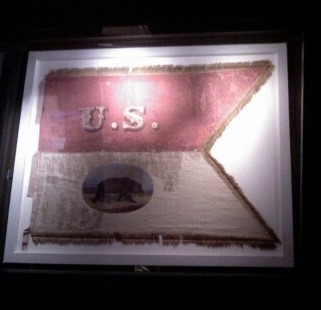
A friend just sent this. Very cool.
A battle guidon carried by members of the California Hundred – cavalry volunteers who served in the Massachusetts 2nd. The only surviving California flag from any Civil War engagement, these colors
witnessed action in the Shenandoah Valley in 1864.
See more on this flag at the Fort Tejon Historical Society here.
The Bonfire: The Siege and Burning of Atlanta
The Bonfire: The Siege and Burning of Atlanta
Marc Wortman
ISBN 978-1-58648-482-8
Pub date: 08/11/09
Price: $28.95/36.50 Canada
6 1/8 x 9 1/4
464 pages
The good folks at PublicAffairs Books sent me a review copy of Marc Wortman’s The Bonfire: The Siege and Burning of Atlanta viewable on my virtual bookshelves here. I decided to create a shelf specific to “Civil War Sieges” because this book doesn’t quite fit in other categories. That uniqueness is part of its draw.
Full disclosure: This is my usual “pre-read” post where I’ll share some early impressions. Wortman had me before page one because he put six nicely done maps right up front. His poignant introduction left me with no recourse but to read on. A small excerpt:
War is cruelty. Its bloodshed and destruction – the “hard hand of war,” as Sherman really did call it – struck Atlanta with a greater ferocity than it has any American city in history. This is the story of how Atlanta and its people came to be in the direct line of the whirlwind, what one of the besieged city’s Confederate defenders called “a grand holocaust of death.” (Wortman, 2)
Having read the first chapter, I can say that Wortman has a talent for turning a phrase. His depiction of a devastated Atlanta on the morning of September 2, 1864 put me there.
A reeking sulfurous stew that stung the eyes had already settled over the town, filling the railroad cuts, hollows, and streets. Its tendrils wavered along the hillsides and ravines and sifted through the blackened skeletons of what once were houses and factories, railcars and machine shops. It was the silence, though, that shocked people most. Three predawn hours of gut-rattling, earsplitting, and window-shattering explosions and gunfire made the previous night feel like the announcement that the Apocalypse had finally come. But the infernal noise had ended shortly before morning’s light tipped into the eyes of those hunkered down within the earth. (Wortman, 5)
From reading just a few chapters of book, its TOC, and its index, I can add that Wortman’s work emphasizes the broader historical context of the war, covers the importance of railroads during the Civil War, provides insights into the conflict as seen from the perspectives of common soldiers and citizens, and draws upon a substantial amount of primary sources. All of these are pluses.
I look forward to a thorough reading.
Author Marc Wortman, see his website here, is a freelance journalist of some acclaim. He received his doctorate in Comparative Literature from Princeton University.
An earlier book published by PublicAffairs Books in May of 2007, The Millionaires’ Unit: The Aristocratic Flyboys Who Fought the Great War and Invented American Air Power, also looks like a great read and I recently ordered a copy. Per the publisher, it is in development as a major motion picture. Of note, both of Wortman’s histories are available in Kindle versions which means you can begin reading them in about 40 seconds.
On losing a son to war
I have a son.
And so, I mourn the loss of this son.
I only knew Jason Shay through the blogosphere and his posts on through amber lenses.
He was killed in action on September 3rd at the age of 22.
Alex Horton, a fellow soldier and blogger, has posted a very fitting tribute here.
Bomber Jacket Pen Wrap: Good Writing and Reading Tools
I love good tools.
I just bought this “Bomber Jacket Pen Wrap” for myself and needless to say am feeling pretty smug about it since I’m posting a picture of it here. I have it just about full with two fountain pens (one new and my favorite – L-Tech), my True Writer Highlighter and my mechanical pencil. Good companions for the trusty Moleskine. Beats digging in backpack for pen.


A Separate Country
![]() The good folks at Hachette Book Group USA sent me a review copy of Robert Hicks’ A Separate Country. A follow up to the bestseller, The Widow of the South, which hit the New York Times Best Seller List, this new title will be available in bookstores on September 23rd. Multiple versions will be available including electronic and audio (unabridged). You can preview the book here.
The good folks at Hachette Book Group USA sent me a review copy of Robert Hicks’ A Separate Country. A follow up to the bestseller, The Widow of the South, which hit the New York Times Best Seller List, this new title will be available in bookstores on September 23rd. Multiple versions will be available including electronic and audio (unabridged). You can preview the book here.
![]() .
.
- Category: FICTION
- Format: HARDCOVER BOOK
- Publish Date: 9/23/2009
- Price: $25.99/$31.99
- ISBN: 9780446581646
- Pages: 432
- Size: 6″ x 9
It’s subject is the ever fascinating Confederate General John Bell Hood and his life after the war with wife, Anna Marie Hennen (see her obit here). You can read excerpts of Hood’s memoir, Advance and Retreat here.
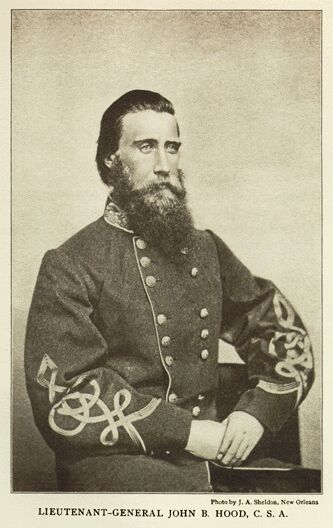
Books for class arrive! Civil War Command and Leadership
Ah… the “ding dong” of the door and the Amazon boxes thump against the door. Love it.
Full disclosure…I had to get some of these from resellers.
Here’s the stack.
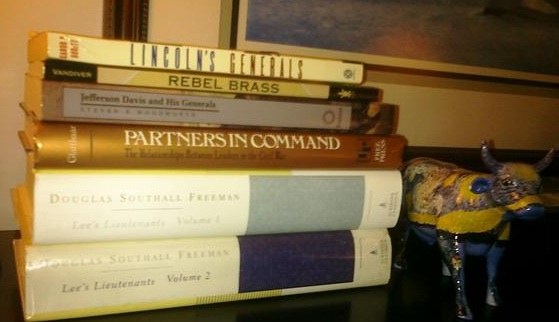
Note I bought the full three volume version of Lee’s Lieutenants (Vol 3 not pictured here). All books on the list can be seen on my virtual bookshelves here.
For more on my upcoming class, see the post below or “the courses” page here.
Stephen Woodworth to Teach Civil War Command and Leadership
Q and A with History Shots’ Larry Gormley on Civil War Information Graphics
My August 16, 2009 post, Review of History Shots – History of the Union Army, American Civil War 1861 – 1865, promised a Q & A with History Shots creator Larry Gormley of History Shots. Larry was kind enough to shoot answers to my first barrage of questions this evening.

Larry Gormley
Q: What was the most challenging aspect of creating the two Civil War graphics?
A: The toughest challenge was how to display the multi-variable data sets within an easy to follow and interesting design. The subject matter dealt with both chronological and geographical content which is difficult to map in a two dimensional space. Selecting the scale and scope of the data took a lot of trial and error. The color palette was critical to the design and information flow and, therefore, required significant work.
Presenting accurate and objective information is very important to me as well. And the importance of accuracy and objectivity is directly related to the level of complexity found in each of the graphics. I wanted to provide enough information and context about the subject to allow people to understand the topic and to draw their own opinions and conclusions.
Q: What techniques do you use to research and create the graphics? I’m imaging a room with ceiling to floor white boards and lots of dry erase pens along with sticky pads.
A: The creation process was long and often difficult but it was always interesting and highly educational; I enjoy greatly the journey from raw idea to completed print. It took about a year to create the first print, History of the Confederate Army, and about nine months to complete the History of the Union Army. Half of the time was devoted to research and data collection. For the research, I started with books in my collection and quickly added material from many libraries located throughout the Boston area. In addition, I purchased a number of very specific, limited run editions that focused on Civil War statistics. Also, I spent hundreds of hours going through a CD version of the Official Records. I captured my research in a spiral notebook and many Excel spreadsheets.
After most of the data is collected I started to prototype micro parts of the story (for example, an individual army in 1862) and high-level views. I find working in both micro and macro levels helps me during the design process. I created about 10 rough ideas before settling on an overall design. I started the design process using paper and colored pens then I moved to Adobe Illustrator.
Q: In your mind, why is this form of social study powerful?
A: I think it is powerful because it presents a large and complex issue within a form that allows the viewer to learn and explore at their own pace. It provides detailed and multi-layered context about important stories within a beautiful design. The design draws you in and lets you dive as deep as you want into a lot data.
Q: Do you have any other Civil War graphics planned?
A: I have an idea for a third graphic but at this time I do not have a firm start date. The idea covers a more direct comparison between the Union and Confederate armies. In addition, I have an idea that includes the Civil War era plus other time periods as well. I have a long list of ideas and it keeps getting longer!
“Darwin’s Legacy” on Academic Earth – The 19th Century Milieu
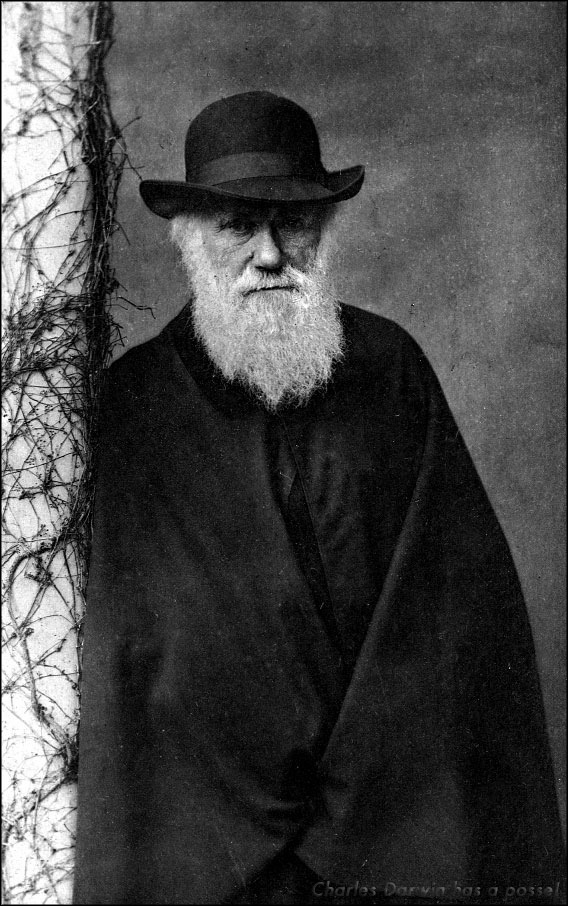
Charles Darwin
I find endlessly fascinating the global milieu of the 19th century. Academic Earth has recently made available an absolutely superb ten lecture course, Darwin’s Legacy. This was a special course organized by Stanford University. Its glue is Dr. William H. Durham, Bing Professor of Anthropological Studies Stanford University.
Much is shared by the outstanding group of lecturers (some of the world’s top scholars representing multiple disciplines) in this course about the world of middle 1800’s. Recall that Charles Darwin’s most famous work was published as America was on the verge of Civil War.
- 1859 On the Origin of Species by means of Natural Selection, or the Preservation of Favoured Races in the Struggle for Life is published in London, Nov. 24 by John Murray.
- 1860 Publishes 2nd edition of Origin. Foreign editions appear. Begins work on Variation book.
- 1861 Continued work on Variation book. Published 3rd edition of Origin. Began work on Orchid book.
You can find his complete works online at the delightful British site, The Complete Works of Charles Darwin Online.
Course Description
“Light will be thrown…” With these modest words, Charles Darwin launched a sweeping new theory of life in his epic book, On the Origin of Species (1859). The theory opened eyes and minds around the world to a radical new understanding of the flora and fauna of the planet. Here, Darwin showed for the first time that no supernatural processes are necessary to explain the profusion of living beings on earth, that all organisms past and present are related in a historical branching pattern of descent, and that human beings fall into place quite naturally in the web of all life.
Now, 150 years later and 200 years after Darwins birth, we celebrate the amazingly productive vision and reach of his theory. In this Fall Quarter course, we will meet weekly with leading Darwin scholars from around the country to learn about Darwins far-reaching legacy in fields as diverse as anthropology, religion, medicine, psychology, philosophy, literature, and biology.
Free Copy of Harsh’s Confederate Tide Rising
UPDATE ALERT: The book was snapped up within minutes of this post. Thanks to everyone who inquired.
—-
I recently ordered a “Like New” copy of Joseph L. Harsh’s Confederate Tide Rising: Robert E. Lee and the Making of Strategy, 1861 – 1862 to round out my set of his series. It came damaged in the post in part because the shipper packed it poorly (no padding). He has kindly offering to replace the book. I would be delighted to provide the damaged copy to anyone who would care to pay for the shipping. The pages of the book are in excellent shape and clearly new/unread. The damage is a scrape/bend to the cover and an associated rip of the book jacket. The dent slightly effects the first 10 pages of the book. Please contact me at renetyree at gmail.com. First-come-first-served.
Battle of the Crater Pen and Ink Map
Speaking of The Battle of the Crater, I found this at the Library of Congress. This is a zoomed in view of pages of what appears to be a journal. Whether intended or not, it implies by its shape a salient (see previous post: Military History Word of the Day – “Salient”). The author appears to be unknown.
Military History Word of the Day – Salient
salient ˈsālyənt; -lēənt n.
1. a piece of land or section of fortification that juts out to form an angle.
2. an outward bulge in a line of military attack or defense. (see example below)
The word “salient” is used frequently in John F. Schmutz’s The Battle of the Crater: A Complete History (see post on his book here).
Due to the extremely close proximity of the opposing lines between the two forts, sniper fire was heavy and constant in this area. Potter’s division was located in the ravine a little more than one hundred yards from Elliott’s Salient, which itself was situated at an angle in the Rebel line of works, the closest at any part to the Union lines. Observers at the time felt the Union line had penetrated into the interior of the Confederates’ lines in this area after the last battle and was thus occupying a tenuous position. (2)
The National Park Service identifies Elliott’s Salient as a point where Federals and Confederates had come close together.
One of these locations was in front of Elliott’s Salient, a Confederate strong point near Cemetery Hill and old Blandford Church. Here the Confederate position and the Union picket line were less than 400 feet apart. Because of the proximity of the Union line, Elliott’s Salient was well fortified. Behind earthen embankments was a battery of four guns, and two veteran South Carolina infantry regiments were stationed on either side. Behind these were other defensive works; before them the ground sloped gently downward toward the Union advance line. (3)
![Gracie's Salient Petersburg Petersburg, Virginia. Confederate fortifications at "Gracie's Salient." LOC Call #: LC-B815- 1059[P&P]](https://wigwags.files.wordpress.com/2009/08/gracies-salient-petersburg.jpg?w=700)
Petersburg, Virginia. Confederate fortifications at "Gracie's Salient." Courtesy of the Library of Congress LC-B815- 1059
Other well known military salients:
From the National Park Service’s virtual tour of the Fredericksburg & Spotsylvania Battlefields: By mid-afternoon on May 12 the fighting at the Muleshoe Salient had reached an impasse. By coincidence, both sides focused attention on another bulge in the Confederate lines known as Heth’s Salient. General Grant ordered General Ambrose Burnside to attack Heth’s Salient at the same time as General Lee ordered General Jubal Early to attack Burnside’s left flank. In doing so, he hoped to relieve pressure on the Confederates at the Bloody Angle.
Muleshoe Salient: Look for reference to Mule Shoe Salient in the Wikipedia post here.
From the National Park Services (see the full story here): The armies flowed onto the battlefield the rest of the day, extending corresponding lines of earthworks east and west of the Brock Road. Ewell’s corps filed in on Anderson’s right and built their entrenchments in the dark to conform with elevated terrain along their front. First light revealed that Ewell’s soldiers had concocted a huge salient, or bulge, in the Confederate line, pointing north in the direction of the Federals. The men called it the “Mule Shoe” because of its shape, but Southern engineers called it trouble. Salient’s could be attacked not only in front but from both sides, and as a rule officers liked to avoid them. Lee, however, opted to retain the position trusting that his cannoneers could keep the “Mule Shoe” safe enough.
From the National Park Service (see the full story here): On May 10, the Union found a weakness in the Confederate defenses. Colonel Emory Upton was ordered with 5,000 men to attack a slight bulge in the Confederate lines known as Doles’s Salient. Upton’s men approached the Confederates on a narrow road (typical of the roads in the area that linked one farm with another) through the woods.
Ypres Salient: Famous for the World War I battle that took place there.
(1) “salient.” The Oxford Essential Dictionary of the U.S. Military. 2001. Encyclopedia.com. (August 23, 2009). http://www.encyclopedia.com/doc/1O63-salient.html
(2) John F. Schmutz, The Battle of the Crater: A Complete History, (Jefferson, North Carolina: 2009), 50.
(3) “The Battle of the Crater, July 30, 1864,” http://www.nps.gov/history/history/online_books/hh/13/hh13f.htm
The Battle of the Crater: A Complete History
- Title: The Battle of the Crater: A Complete History
- Author: John F. Schmutz
- Published on: 2009-01-19, McFarland & Company, Inc., Publishers
- Binding: Hardcover
- 428 pages
- ISBN-10: 0786439823
- ISBN-13: 978-078643982
I have happily received a review copy of John F. Schmutz’s The Battle of the Crater: A Complete History. I can be counted among those whose interest in this remarkable 9 hour battle was piqued after watching the mesmerizing opening sequence of the film based on Charles Frazier’s Cold Mountain.
It would be hard to find a similar military event in history that paralleled this one in terms of overwhelming potential for success run amok. Schmutz’s use of an opening quote about the July 30, 1864 battle by Ulysses S. Grant perhaps says it best…
The loss in the disaster of Saturday last foots up about 3,500, of whom 450 men were killed and 2,000 wounded. It was the saddest affair I have ever witnessed in the war. Such an opportunity for carrying fortifications I have never seen and do not expect again to have.
– Lieutenant General Ulysses S. Grant to Major General
Henry W. Halleck, August 1, 1864.
According to Schmutz, his interest in the Battle of the Crater began with the discovery that he had “two direct ancestors in the battle, one with the 14th New York Heavy Artillery, which at the last minute, and without any preparation or forewarning, was chosen to lead the assault, with disastrous consequences.” (Preface) This seed germinated into one of the first studies to take a broad-brush approach to the battle, examining the events leading up to it, the country’s mood in its now third year of civil war, brutality committed against black troops, atrocities perpetrated by both sides, first-hand accounts, and the impact of the battle “on the body politic of both sides.”
Schmutz appropriately gives readers a sense for war in the trenches that were part of the Siege of Petersburg.
As both sides dug even deeper entrenchments and more infantry obstacles, the rolling farmland east and south of the city was soon churned into scenes resembling a moonscape. These tandem ramparts ran for twenty-six miles, crossed two major rivers, and traversed parts of four Virginia countries, from White Oak Swamp, east of Richmond, across Bermuda Hundred and south of the Jerusalem Plank Road below the city. No campaign of the war quite equaled the siege of Petersburg, which was the object of the longest military action ever waged against an American city. More battles were fought and more lives lost there than in the defense of any better-known Southern cities such as Richmond, Vicksburg or Atlanta. (p. 40)
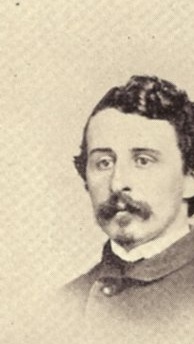
Henry Pleasants
The excellent chapter titled “The Earth Movers,” reveals how Lt. Col. Henry Pleasants and the men of the 48th Pennsylvania, many of them coal miners, accomplished what Meade’s engineers mockingly called impossible, the building of a lengthy tunnel without detection by the Confederates. Receiving literally no support from Meade or his men, Pleasants overcame every challenge with ingenuity and innovation. As an example, he used a combination of miner’s bellows and fire to create draft to circulate air through a shaft built into the tunnel wall. This bit of creative thinking, the details of which are a must read, became what Schmutz called Pleasants’ “greatest engineering feat.” (p. 61)
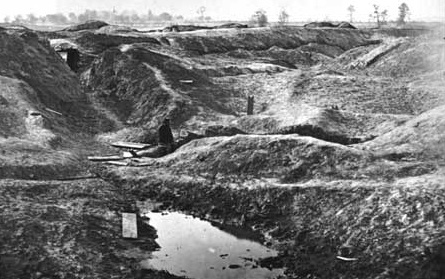
From the National Park Service site on the Petersburg National Battlefield, "The Crater as it appeared in 1865. The Union soldier seated at the end of the tunnel gives an idea of the size of the Crater." Click the image to go to the site.
Of note, Schmutz provides an impressive set of references in his appendices, something I always value in a book of serious history. These include:
- Organization of Opposing Forces on July 30, 1864 including Union and Confederate Corps, Division, and Brigade, and in some cases Company commanders and officers
- Casualty counts by Corps, Division, Brigade and Unit
- Medal of Honor Recipients and Confederate Roll of Honor Recipients by Corps including a brief statement about why they received the award
Union Officers Killed or Mortally Wounded by Corps, Division, and Brigade - Full and extensive Chapter Notes
- An impressive Bibliography which demonstrates the extent of primary sources used in Schumtz’s research
I greatly look forward to fully reading this book and fully expect that a Highly Recommend will be forthcoming.
Kevin Levin has recently provided a review of The Battle of the Crater: A Complete History on H-Net here.
Stephen Woodworth to Teach Civil War Command and Leadership
I just registered for my next course: Civil War Command and Leadership. Here’s a quick summary: “a study of national, theater, and operational command structures of the Union and Confederacy, the leadership styles of key military leaders on both sides, and the evolution of command and control in the war. Major themes include the relationship between the commanders in chief and the generals who led the armies in the field, the relationships between the generals themselves, and the ways in which the relationships described above either served to facilitate or debilitate the causes those commanders served.”
I am VERY excited about the professor, Steven E. Woodworth!

- Ph.D., Rice University, 1987
- Professor of history at Texas Christian University
- Author, co-author, or editor of twenty-seven books you can view here
- Two-time winner of the Fletcher Pratt Award of the New York Civil War Round Table (for Jefferson Davis and His Generals and Davis and Lee at War)
- Two-time finalist for the Peter Seaborg Award of the George Tyler Moore Center for the Study of the Civil War (for While God Is Marching On and Nothing but Victory)
- Winner of the Grady McWhiney Award of the Dallas Civil War Round Table for lifetime contribution to the study of Civil War history
I’ve added a new page on my bookshelves to show the booklist for the course as it stands today which you can access here.
The Rebel and the Rose
I was pleased to recently receive a review copy of the book The Rebel and the Rose: James Semple, Julia Gardiner Tyler, and the Lost Confederate Gold. Its authors, Wesley Millett and Gerald White, are profiled on the book’s attractive website here. The book is currently published by Turner Publishing Company.
It promises insight into several interesting topics:
- the flight of Jefferson Davis at war’s end
- the disappearance of the Confederate war chest
- a romantic liaison with presidential ties
More to come…
Civil War Historian David Blight to Serve as Judge for National Book Awards

David Blight
The National Book Foundation has announced that Civil War historian and Yale history professor David W. Blight will be a judge for the 2009 Nonfiction National Book Award. Blight is “Professor of History at Yale University and author of many books on nineteenth century American history, including A Slave No More, published in 2007.” Finalists will be announced on October 13.
See my previous post on Blight’s lectures available on Academic Earth here.
www.davidwblight.com
Military History Word of the Day: “Refuse”
Refuse
Military. to bend or curve back (the flank units of a military force) so that they face generally to the flank rather than the front.
refuse. Dictionary.com. Dictionary.com Unabridged (v 1.1). Random House, Inc.http://dictionary.reference.com/browse/refuse (accessed: August 08, 2009).

It is not surprising that McClellan did not immediately decide to employ his left wing under Franklin to relieve Harpers Ferry. In focusing on Frederick for the past several days, the Federal right had not only advanced quicker and farther, but the left had angled northward toward Frederick. In consequence Burnside was now considerably nearer Harpers Ferry than Franklin. Moreover, McClellan needed to refuse his left flank along the Potomac until he learned the meaning of the rumor that Jackson had recrossed the river at Williamsport. Lincoln may have jumped to the conclusion that the Confederates were retreating, but the possibility of a turning movement could not be dismissed lightly.
1. Joseph L. Harsh, Taken at the Flood : Robert E. Lee and Confederate Strategy in the Maryland Campaign of 1862 / [book on-line] (Kent, OH: Kent State University Press, 1999, accessed 8 August 2009), 209-210; available from Questia, http://www.questia.com/PM.qst?a=o&d=102364919; Internet.
The Monocacy Aqueduct
.
I’ve been reading this weekend about the Monocacy Aqueduct, a bridge which carried the Chesapeake & Ohio Canal over the confluence of the Monocacy River and Potomac River. It was constructed between 1829 and 1833 and was one of “eleven stone aqueducts designed to carry the canal across the major river tributaries that drain into the Potomac River along the canal’s route.” [1] It spans 516 feet, has seven arches, and was constructed primarily of stone quarried from nearby Sugarloaf Mountain. [2]
Because the canal was used to carry war materials and men, Lee twice ordered it destroyed. The first directive was to General D. H. Hill who conducted preliminary raids into Maryland in early September, 1862. Hill was also to “disrupt the B&O Railroad.” [3] According to the Smithsonian Associates in an article here, lock keeper Thomas Walter, convinced Hill to drain the aqueduct rather than destroy it. While sympathetic to the Southern cause, Walter did not want to see the structure destroyed. [4]
Hill’s men cut banks holding out the Potomac River and put large boulders in the canal but all damage was largely repaired within two months.
More on the Monocacy Aqueduct later.
Interesting fact: The locks built on the Chesapeake and Ohio Canal were based on hydraulic designs by Leonardo da Vinci.
Because of the importance of waterways through the Civil War, I’ve renamed and expanded “the rivers” page on WigWags to “the waterways” page.
[1] “The Monocacy Aqueduct: An Icon of American Civil Engineering,” The National Park Service, http://www.nps.gov/archive/choh/History/Structures/Monocacy.html, access online August 2, 2009.
[2] nps.gov, http://www.nps.gov/choh/photosmultimedia/index.htm?eid=118223&root_aId=109#e_118223, accessed online August 2, 2009.
[3] Joseph L. Harsh, Take at the Flood: Robert E. Lee & Confederate Strategy in the Maryland Campaign of 1862, (Kent, Ohio: The Kent State University Press, 1999), 71.
[4] “The Monoacy Aqueduct,” The Smithsonian Associates, CivilWarStudies.org http://civilwarstudies.org/articles/Vol_5/monocacy.shtm, accessed online August 2, 2009.
On Geography Lessons and Civil War Cartography
–
The highlight of the first five chapters of Two Great Rebel Armies by Richard M. McMurray was hands down the lesson on geography. This is, I fear, an area that receives too little emphasis in our study of the war. Particularly interesting was the reference to the Shenandoah Valley (Valley of Virginia) and the advantages and disadvantages it presented to those who chose to maneuver in it. It helps me to actually “see” a map of the area and I found a collection that you might find helpful if you’ve not already discovered it. It is the Hotchkiss Collection on the Library of Congress site here. The collection consists of 341 sketchbooks, manuscripts, and annotated printed maps, the originals of which reside in the Library of Congress’ Geography and Map Division. It also provides two essays including a biographical essay about Hotchkiss. Not to be missed is the Map of the Shenandoah Valley which was considered a masterpiece.
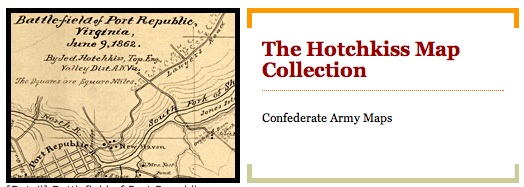
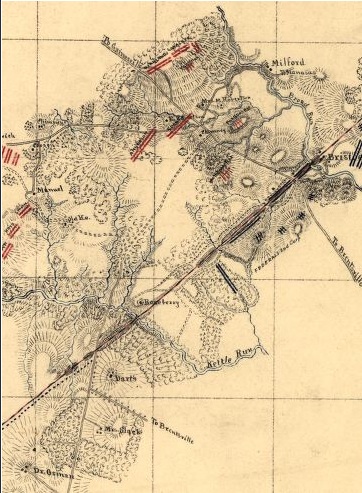
Sketch of the Battle of Bristoe, Wednesday, Oct. 14, 1863 / by Jed. Hotchkiss, Capt. & Top. Engr., 2nd Corps, A.N.Va. (Library of Congress)
Major Jedediah Hotchkiss (1828-1899) was considered the cartographer of the Army of Northern Virginia. He was a topographic engineer in the Confederate Army. Most of the works in the collection are of the Shenandoah Valley and certainly some would have been used by Lee and his commanders.
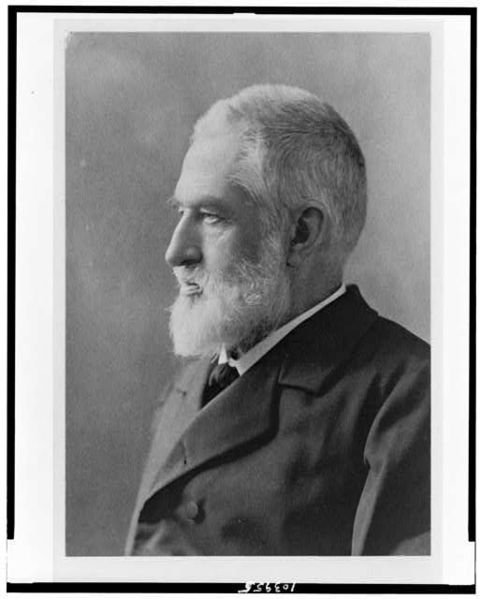
Jedediah Hotchkiss
The letters of Jedediah Hotchkiss are available on the University of Virginia’s excellent The Valley of the Shadow digital history project here. This exceptional collection is well worth the read and covers the major’s war experiences from 1861 – 1864 as conveyed to his family.
Military History Word of the Day: “Ambuscade”
–
am⋅bus⋅cade
[am-buh-skeyd] noun, verb, -cad⋅ed,
–noun
1. an ambush
–verb (used without object)
2. to lie in ambush.
–verb (used with object)
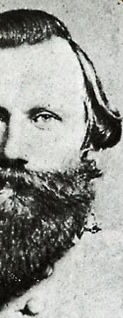
Jeb Stuart
3. to attack from a concealed position; ambush.
1575–85; < MF embuscade, alter. (under influence of OF embuschier) of MF emboscade < OIt imboscata, fem. ptp. of imboscare, v. deriv. with in- of bosco wood, forest < Gmc *bosk- bush
Related forms: am⋅bus⋅cad⋅er, noun [1]
—-
As used by Joseph L. Harsh in Taken at the Flood…
On this occasion, Jeb Stuart justified his reputation for alert reconnaissance. Almost instantaneously he perceived and reported to Lee the enemy’s rapid withdrawal. He also ordered Hampton to pursue and harass the Federal column retiring from Flint Hill toward the Chain Bridge. Into the hours of darkness, Hampton closely pressed the Federal tail under Sedgwick, lobbing shells into the panicky main body until the heavy casualties suffered by the 1st North Carolina Cavalry in an “ambuscade” laid by the 71st Pennsylvania Infantry bought breathing space for the retreating Federals. Meanwhile, in the center of the line, where Stuart had only Fitz Lee’s tired troopers, the Confederate horsemen pressed more gently and permitted Hooker to withdraw through the county seat virtually unscathed. Heros von Borcke, Stuart’s Prussian chief of staff (see his memoir online here), planted the Confederate colors on the courthouse green, while deliriously happy Southern sympathizers mobbed the troopers, and damsels showered Stuart with kisses. Jeb even found time to visit his friend and “spy” Antonia Ford. [2]
—–
[1] ambuscade. Dictionary.com. The American Heritage® Dictionary of the English Language, Fourth Edition. Houghton Mifflin Company, 2004. http://dictionary.reference.com/browse/ambuscade (accessed: July 25, 2009).
[2] Joseph L. Harsh, Taken at the Flood : Robert E. Lee and Confederate Strategy in the Maryland Campaign of 1862 / [book on-line] (Kent, OH: Kent State University Press, 1999, accessed 25 July 2009), 19; available from Questia, http://www.questia.com/PM.qst?a=o&d=102364729; Internet.
More Debate on The State of Jones and Interview with John Stauffer
–
A quick break from the books to tip the hat to Elektra Tig for Tweet on John Stauffer interview here on the Omnivoracious blog about his book, The State of Jones.
The book continues to generate debate.
The Wall Street Journal posted a chapter in their books section here and Michael B. Ballard’s review of the book appears in the WSJ here. Authors Sally Jenkins and John Stauffer provide a response/rebuttal to that review on July 17th in an article titled “The State of Jones Was Real, and Ahead of Its Time” available here. The debate continues to be fascinating.
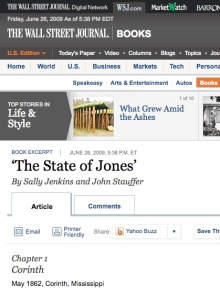
OK back to Taken at the Flood.
Up this week: Taken at the Flood
I’m thrilled to be finally reading Taken at the Flood: Robert E. Lee and the Confederate Strategy in the Maryland Campaign of 1862. Clearly I must obtain copies of the other books in this series.
The State of Jones Debate
There is a fascinating debate afoot on the new book The State of Jones I mentioned in a post on June 23rd here. Authors John Stauffer and Sally Jenkins respond to the three part review by Vicki Bynum. I suggest that interested readers begin with Dr. Bynum’s review (Part III here) and then make your way over to Kevin Levin’s blog post where the majority of the debate is captured here.
Civil War Historian Kenneth M. Stampp Dies, 96

The folks at the Berkeley’s public affairs office confirmed for me today that Kenneth M. Stampp died. His book The Peculiar Institution: Slavery in the Ante-Bellum South (1956) is required reading in my program and rightly so. The view into slavery was groundbreaking.
A full obituary will be posted shortly on Berkeley’s news site.
Condolences to his family.
(http://www.berkeley.edu/news/media/releases/2009/07/13_stampp.shtml)
Book Review: Lincoln and His Generals
 T. HARRY WILLIAMS. Lincoln and His Generals. New York: Random House, 1952. Pp. viii, 363, $2.40.
T. HARRY WILLIAMS. Lincoln and His Generals. New York: Random House, 1952. Pp. viii, 363, $2.40.

T. Harry Williams
Over half a century ago, T. Harry Williams wrote an exceptional work with as major theme that the performance of President Abraham Lincoln as commander in chief during the American Civil War positioning him as the true director of the war efforts of Northern armies and the progenitor of the country’s first modern command system. He shows Lincoln to be an able student of military strategy who ramped up quickly, grasped the end game and generally how to reach it, but struggled to find the right executioner of those plans. That he was even more skilled as a politician meant that he functioned superbly as leader in both political and military spheres throughout the conflict.
This is a work about the challenges of leadership set against what Williams calls the first of the “modern total wars.” (3) Williams chronicles the war from Lincoln’s perspective presenting the strengths and, more notably, the many foibles of the men who served the North in senior military positions. Their relative caliber appears to have been directly correlated to the attention Lincoln had to give them. More attention from and scrutiny by Lincoln was thus not a mark of achievement. Williams’ work reflects that relative attention. For example, he begins his discussion of McClellan in Chapter 2 and does not finish with him until Chapter 8 at which point Lincoln finally dismisses McClellan in disgust. (179) Williams takes his readers through the agonizing months Lincoln spent attempting to manage McClellan and his paranoia regarding enemy troop strength and inability to execute when it would put his men in harm’s way or there was the potential to fail. Grant, by contrast to McClellan, received some but not extensive coverage by Williams reflecting Lincoln’s own confidence that Grant could carry forward Lincoln’s strategic aims effectively. Williams concludes that in the waning months of 1864, Lincoln had sufficient trust in Grant to intervene little in the war’s management. That is not to say that Lincoln shrugged off any responsibility in setting strategic direction or in monitoring closely “and sometimes anxiously” the conduct of the war. (336) He was quick to reset direction when required.

Williams’ organization of the book is driven largely by the order of his encounters with senior military leaders. He begins with the infamous but corpulent and declining General Winfield Scott. We are given images of Lincoln chatting by the fire in Scott’s drawing room about daily reports and strategic options. Lincoln begins to reveal his own nascent military strategies and to measure those proposed by the militarist Scott against civilian and political realities. Lincoln also demonstrates an important resolve to make and stand by decisions even if they go against those of senior military advisors. Williams provides illustration of this by pointing to Lincoln’s grasping of the strategic golden nugget within Scott’s Anaconda Plan of control of the Mississippi but Lincoln’s rejection of its execution because it risked a drawn out and uncertain resolution.
Regular army man Irvin McDowell is then tagged by Lincoln to take command of the swelling number of troops in and around Washington, a number that by the summer of 1861 exceeded 30,000 men. Lincoln pushes McDowell, of course, into an offensive movement at Manassas to disastrous results. While the mark against McDowell’s mediocre reputation is severe, Williams allows us to see that Lincoln is willing to bear some of the blame.
The scene is thus set for the summoning of McClellan to Washington. This begins Lincoln’s relationship with “the problem child of the Civil War.” (25) Williams chronicles the early months of McClellan’s experiences in the East, his messianic complex, disrespect for Lincoln and others with whom he had to deal, and the efforts that Lincoln had to make to manage a man who held such promise but failed to deliver. It is clear that Lincoln, to this credit, attempted many different techniques in his efforts to supervise McClellan.
John C. Fremont, McClellan’s peer in the Western Department and a political appointment made by Lincoln himself, proves disastrous in his mismanagement of Missouri and a bitter disappointment. Williams captures well the odd quirks of both Fremont and the Blair family, his patrons, and the lengths to which Lincoln had to go to remove him.
Halleck is portrayed as only marginally effective and jealous enough of Grant’s successes in the field to take credit for them. (61) His self-directed shift to subordinate role as coordinator and communicator between Lincoln and his staff is fascinating.
Other commanders are mentioned primarily for their lack-luster performances including Rosecrans, Buell, Thomas, Banks, and Butler to name a few. Williams’ provides an excellent summary of each man including physical characteristics, approach to command, reputation, and personality traits. He often reveals the quirks or failings that made them less than acceptable as senior command candidates. For example, he describes Benjamin F. Butler as “ingenious, resourceful, and colorful, but …no field general.” (188) Williams’ description of Rosecrans reveals a well researched sum of the man from his “intensified Roman nose” to his “good strategic sense and aggressive instincts.” (186-187) But he is thorough enough to point to Rosecrans weaknesses including a lack of “balance and poise that a great commander should have” which revealed a man unable to “control himself and the situation.” (187)
Clearly apparent in this history is that Lincoln, while climbing a steep learning curve, became an astute war strategist. In fact, Williams contends that the notion of “total war” as a means of destroying the Confederate Army was identified earliest and most enthusiastically as a strategic plank by Lincoln who “saw the big picture” better than most of his commanders and staff. (7) He further asserts that no one in the military leadership of either side had the experience to wage war at the scale that would be America’s Civil War. Both sides shared an equal innocence of the knowledge war making. (4) That said, Lincoln’s performance when viewed against that of Davis is all the more impressive.

Williams points out that Lincoln exhibited many good qualities as a leader. By example, he was not quick to claim credit for the successes of Sherman, even though he would have been justified to do so given the strategic direction he provided. Rather, Lincoln showered praise on men whose efforts were successful. He seemed to simply want vigilance and self-reliance from his commanders, both qualities he saw in Grant. (315)
Williams’ use of primary sources is impressive and adds credibility to his conclusions. Many citations were from actual correspondence or official records of exchanges between Lincoln and his team or Halleck and the field commanders. This depth of research adds much to the work.
At the time of publication, this book was the only one to fully examine Lincoln’s performance as commander in chief and stood as such for many years. Interestingly, in 2009, historian James McPherson visited the same topic and drew much from Williams’ foundation in his work, Tried by War: Abraham Lincoln as Commander in Chief. While good, I find it no better and in many ways a rehashing of Williams’ work, one that continues to stand on strong scholarship and goes far toward explaining Lincoln’s brilliance as both politician and military strategist.
Audio Recordings of CUNY Roundtable on Writing History
For fellow graduate history students with a thesis or dissertation ahead or in progress, or for anyone who wrestles with the writing of history, I hope you’ll find as interesting as I did this audio capture of a roundtable of history professors sharing their perspectives on the craft. Also helpful is the Q & A with students. The speakers are listed below along with the links to their individual talks.
This is also available on the Resources page of the Ph.D. in History Program, City University of New York (CUNY) here.
Introduction (David Nasaw)
Dagmar Herzog
Thomas Kessner
David Nasaw
Steven Remy
Martin Woessner
Comments and Questions
Staff Ride Guide – Battle of Antietam

Informative read about the Battle of Antietam prepared as a “Staff Ride Guide” by Ted Ballard, CENTER OF MILITARY HISTORY, UNITED STATES ARMY. This assisted, among other things, with my understanding of artillery and particularly how units were organized who supported the guns. Interesting factoids from page 83 -84 (note this entire book is available online by clicking on the book image above):
“The artillery of both armies was generally organized into batteries of four or six guns. Regulations prescribed a captain as battery commander, while lieutenants commanded two-gun “sections.” Each gun made up a platoon, under a sergeant (“chief of the piece”) with eight crewmen and six drivers.
For transport, each gun was attached to a two-wheeled cart, known as a limber and drawn by a six-horse team. The limber chest carried thirty to fifty rounds of ammunition, depending on the size of guns in the battery. In addition to the limbers, each gun had at least one caisson, also drawn by a six-horse team. The caisson carried additional ammunition in two chests, as well as a spare wheel and tools. A horse-drawn forge and a battery wagon with tools accompanied each battery. A battery at full regulation strength included all officers, noncommissioned officers, buglers, drivers, cannoneers, and other specialized functions and might exceed 100 officers and men. With spare horses included, a typical six-gun battery might have 100-150 horses.
A battery could unlimber and fire an initial volley in about one minute, and each gun could continue firing two aimed shots a minute. A battery could “limber up” in about one minute as well. The battery practiced “direct fire”: the target was in view of the gun. The prescribed distance between guns was fourteen yards from hub to hub. Therefore, a six-gun battery would represent a front of about 100 yards. Depth of the battery position from the gun muzzle, passing the limber, to the rear of the caisson was prescribed as forty-seven yards. In practice, these measurements might be altered by terrain.”
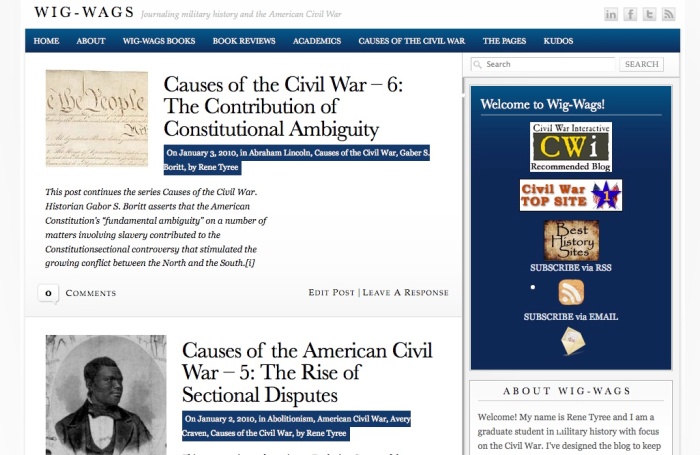
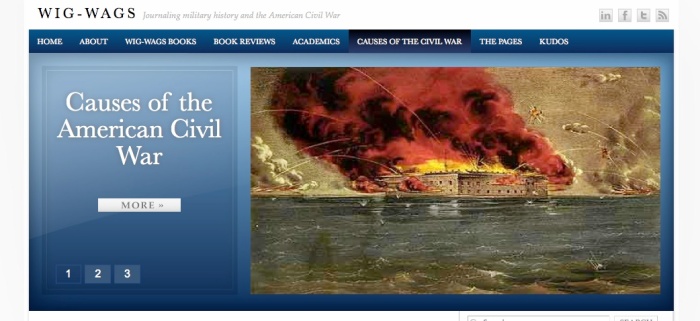

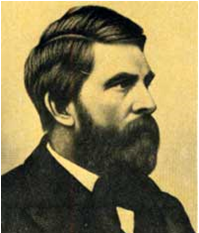
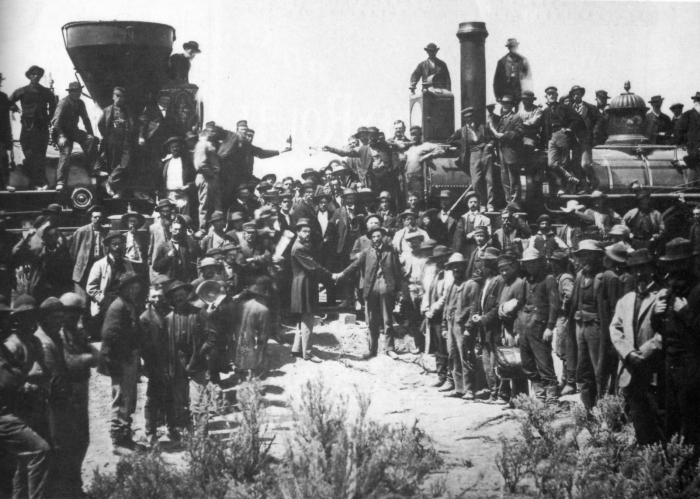
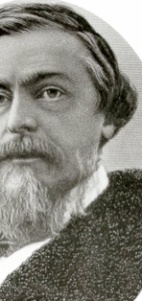

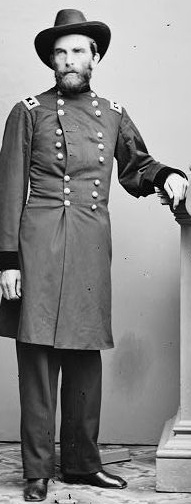
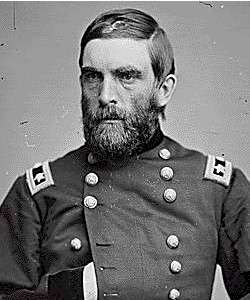
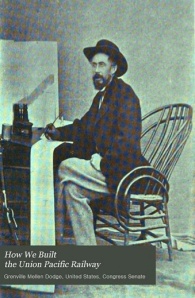
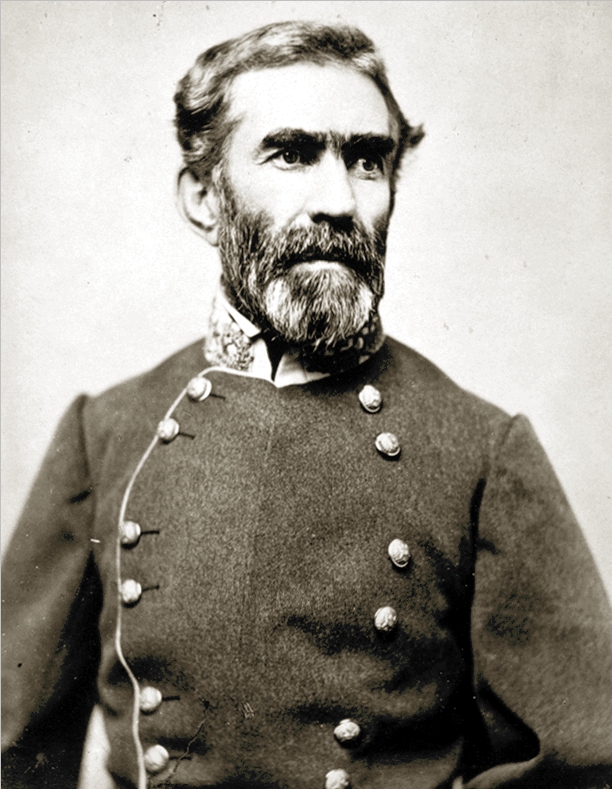

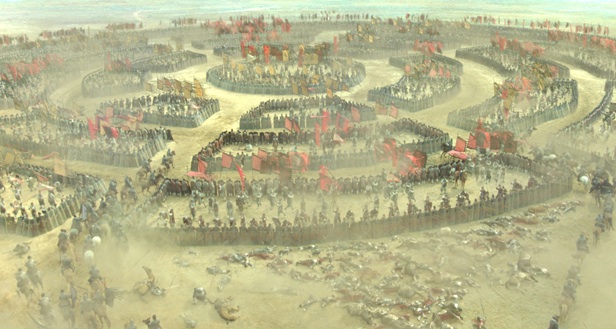
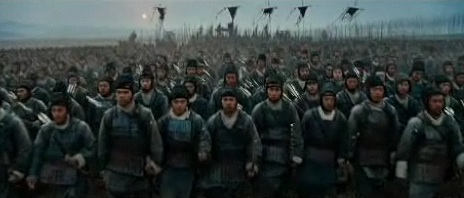
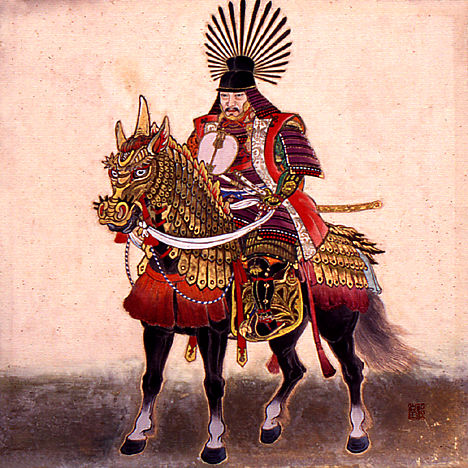
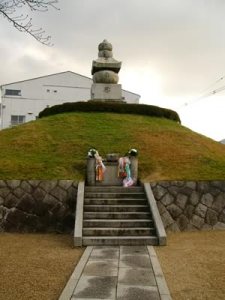
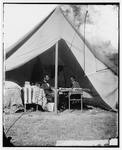

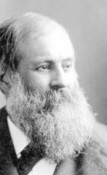
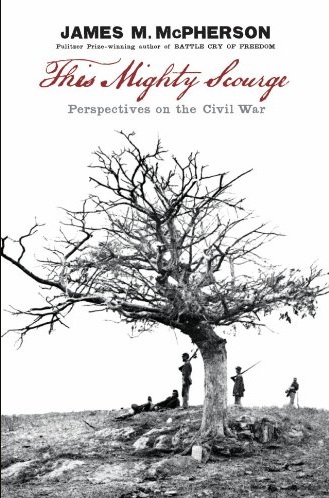

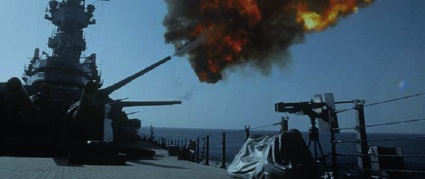
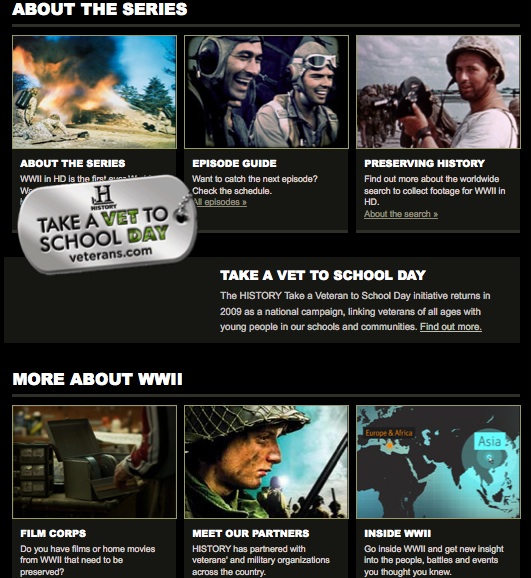
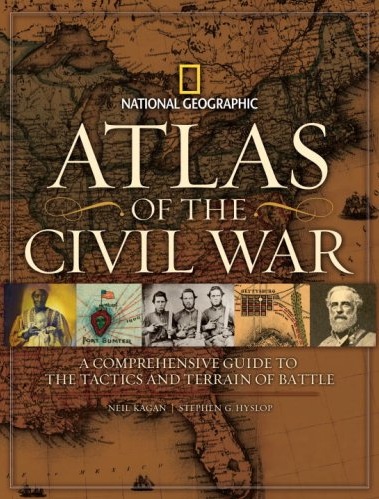
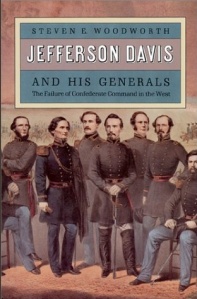
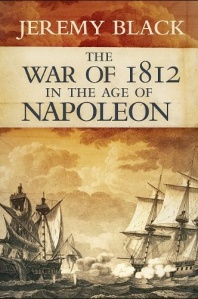
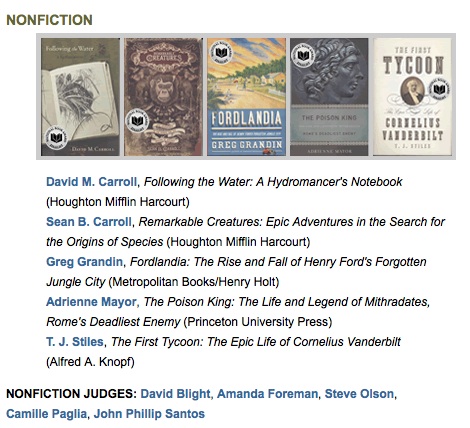



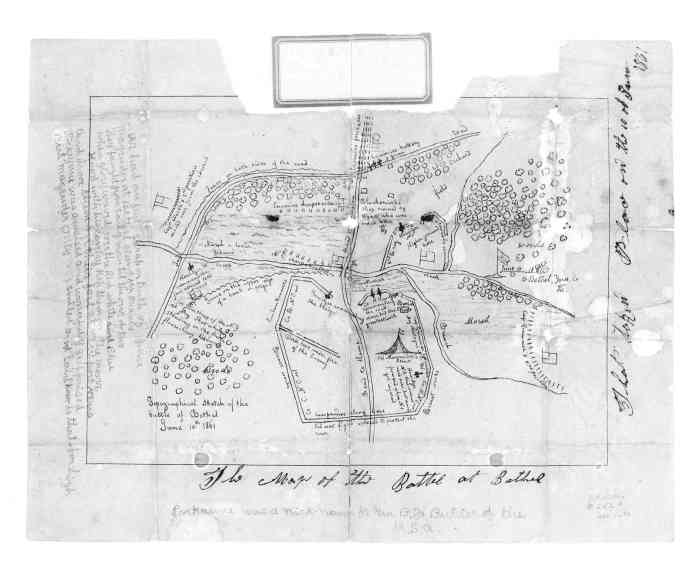
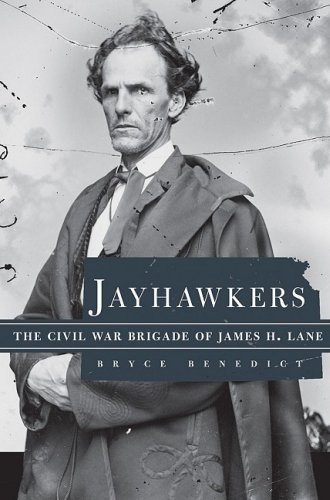
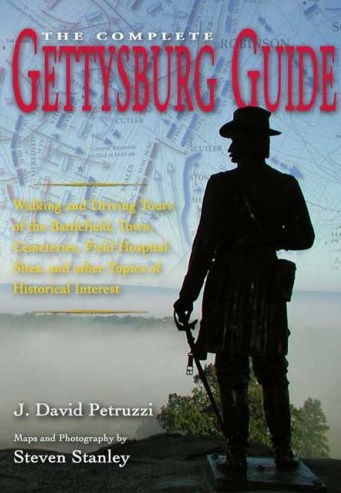
![the-fight-between-the-alabama-and-the-kearsarge-nh59354 "The Fight Between the Alabama and the Kearsarge" [NH59354]](https://wigwags.files.wordpress.com/2008/09/the-fight-between-the-alabama-and-the-kearsarge-nh59354.jpg?w=700)
